Annual Report 2020
A pivotal year
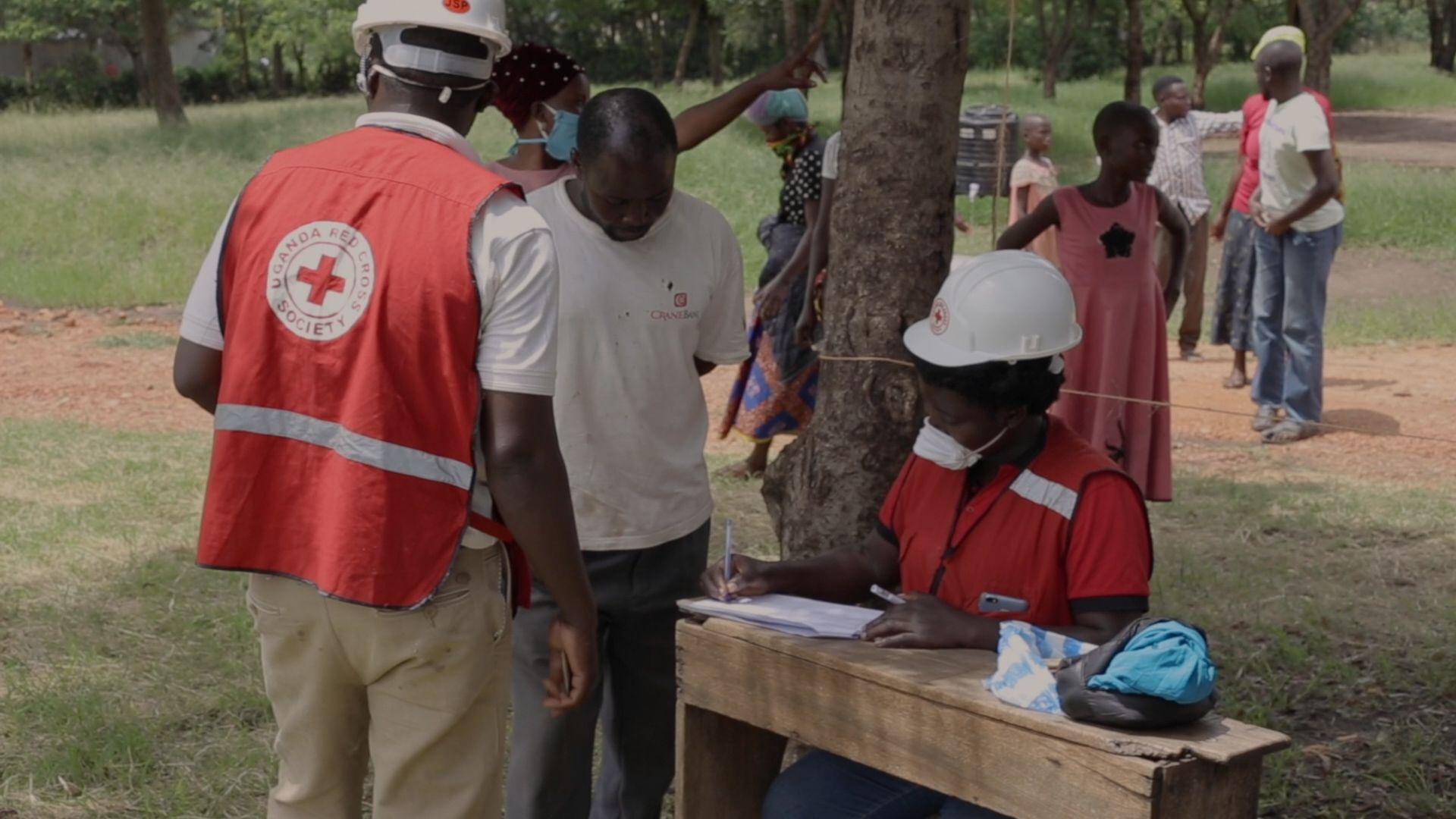
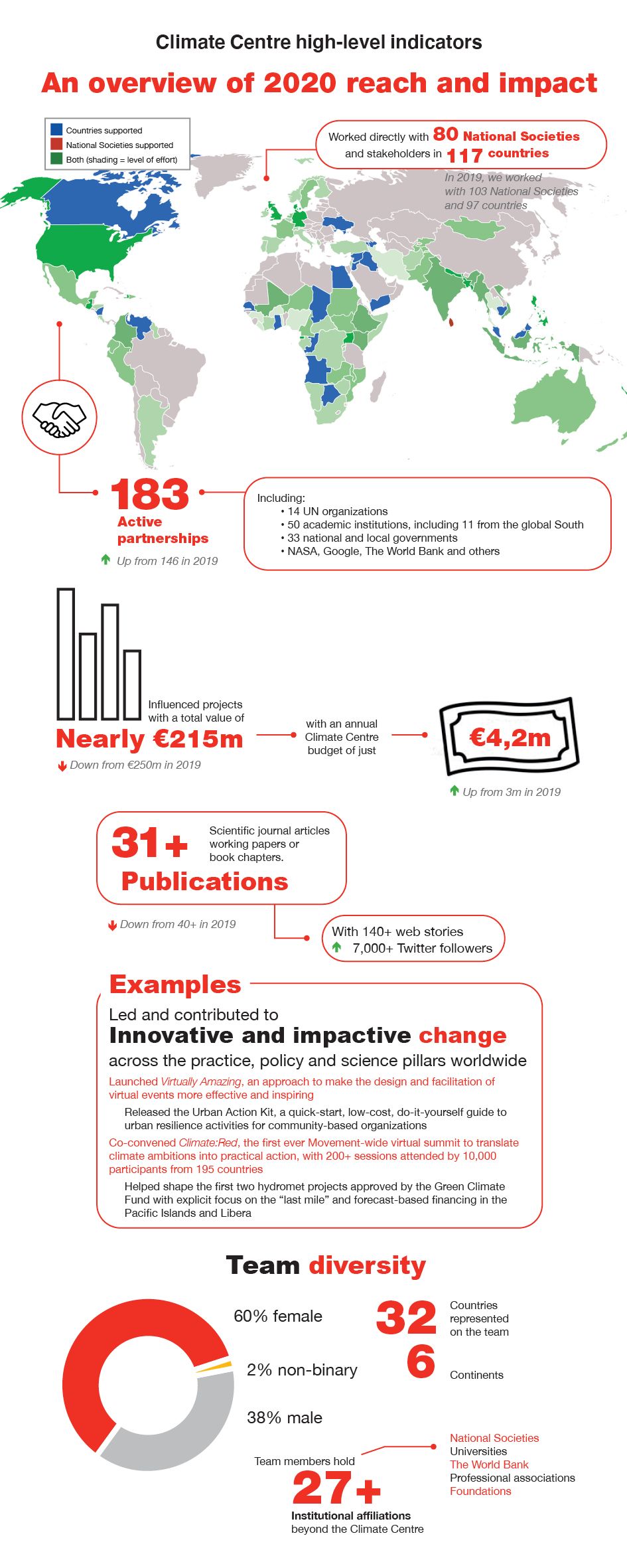
PREFACE
The word adaptation has long had a clearly understood meaning within the climate community, but last year it took on a major additional sense: the evolution of a whole new way of both living and working amid a global pandemic.
As a specialist reference centre on climate, we immediately recognized both the need for continued virtual interaction on rising risks and the opportunity for a sustained reduction of our own carbon footprint though the Virtually Amazing tools featured here.
One of the highlights of the virtual year, indeed, was the IFRC Climate:Red Summit that demonstrated our ability to link global ambition to local action, harnessing the power of volunteers on the front lines of risk. And it was Princess Margriet of the Netherlands, herself once a volunteer for the Netherlands Red Cross, who highlighted in a conversation with a young climate champion from Costa Rica that it’s the next generation who give us hope for the future.
In the field, of course, our colleagues in National Societies, the IFRC and the ICRC also had to mine new seams of ingenuity in carrying out assessments, distributions, evacuations, and other humanitarian operations under social distancing.
They did adjust successfully in both responses and early actions that continued to save countless lives, with the millions evacuated ahead of Cyclone Amphan in India and Bangladesh, for instance.
So despite the pandemic – because of it, in fact – it has indeed been a pivotal year.
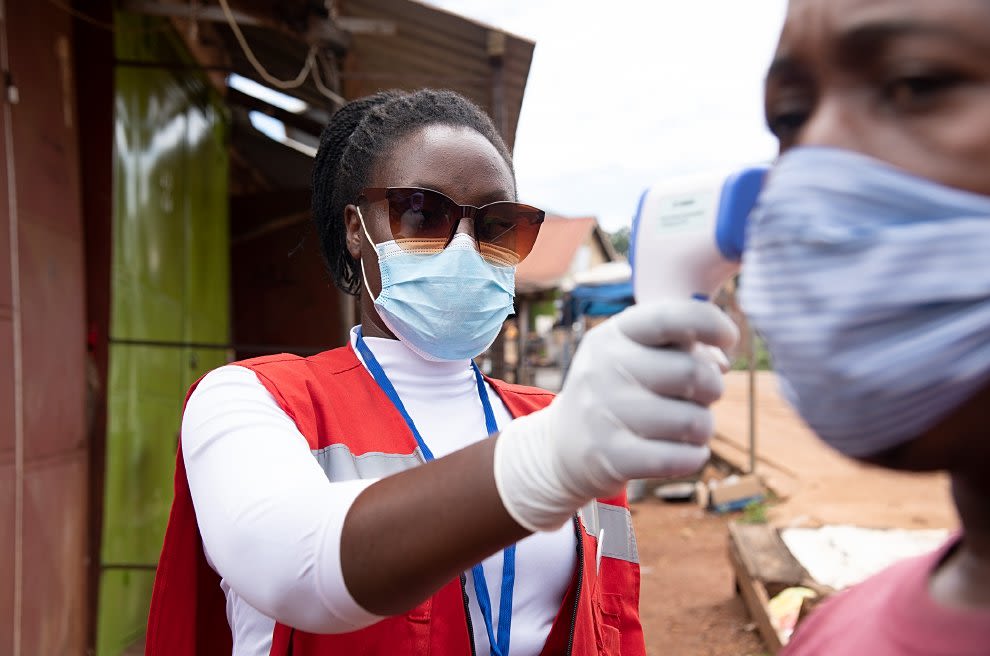
A Uganda Red Cross volunteer takes a spot temperature in a Covid check. (Uganda Red Cross Society)
A Uganda Red Cross volunteer takes a spot temperature in a Covid check. (Uganda Red Cross Society)
Covid demonstrated more convincingly than any briefing paper or conference speech ever could how closely related are the global risks and what a truly global effort to address them might feel like.
On cue, the Red Cross Red Crescent Movement, with our support, last year published important new ambitions while, for the first time, the IFRC devoted the whole of World Disasters Report to climate.
Covid also generated unprecedented opportunities for a far-reaching pivot on what’s actually needed to address the climate crisis. Leaders are now all talking about the “green, resilient, inclusive” recovery that we have been arguing for all year.
But the world is still very far from meeting the emissions goals of the Paris Agreement, and many communities, as this report illustrates, are already quite literally feeling the heat: the wildfires in Australia and California, the heatwave danger in Europe (again the most lethal disaster of the year in 2020), as well as relentless storms in Asia and Central America.
World Disasters Report showed how the world’s efforts to support those most vulnerable to the rising risks fall short, especially in fragile countries.
As our thoughts turn toward the equally pivotal COP 26 in Glasgow, described as a make-or-break meeting, we must find a way forward from our newly adapted standpoint, linking global ambitions to action at scale on the front lines of the climate crisis. We’re proud to support those efforts on the ground, linking science, policy and practice.
by Ed Nijpels and Maarten van Aalst
Picture: Forecast-based flood relief in Bangladesh, 2020. (BDRCS-IFRC)
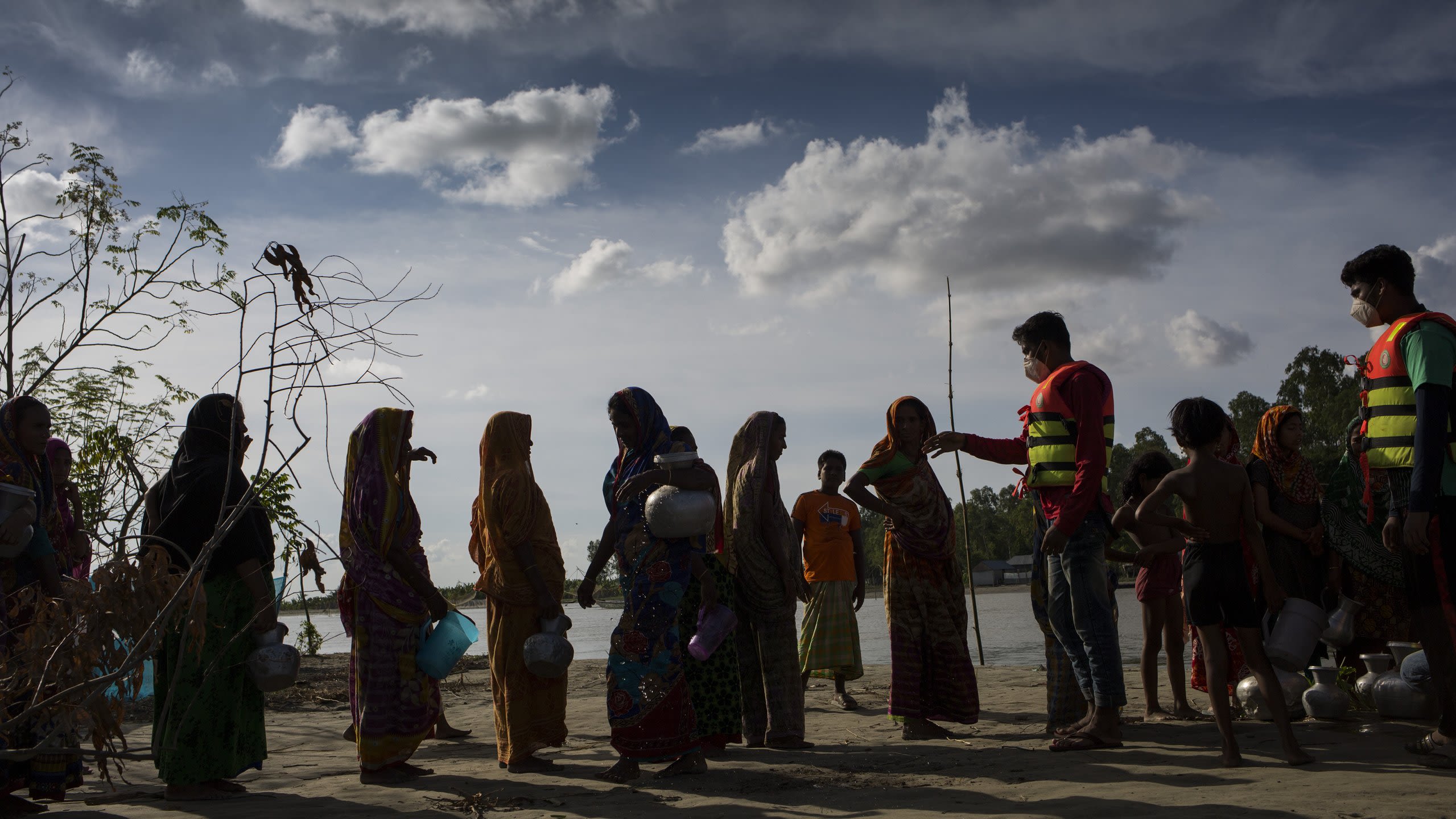
Virtually Amazing and Covid
‘Let’s not aim to meet despite the distance: let’s re-imagine all that we can accomplish if we are liberated from the expectation of having to be physically under the same roof’
– Meeting without Flying, A Manifesto for ‘Virtually Amazing’ meetings
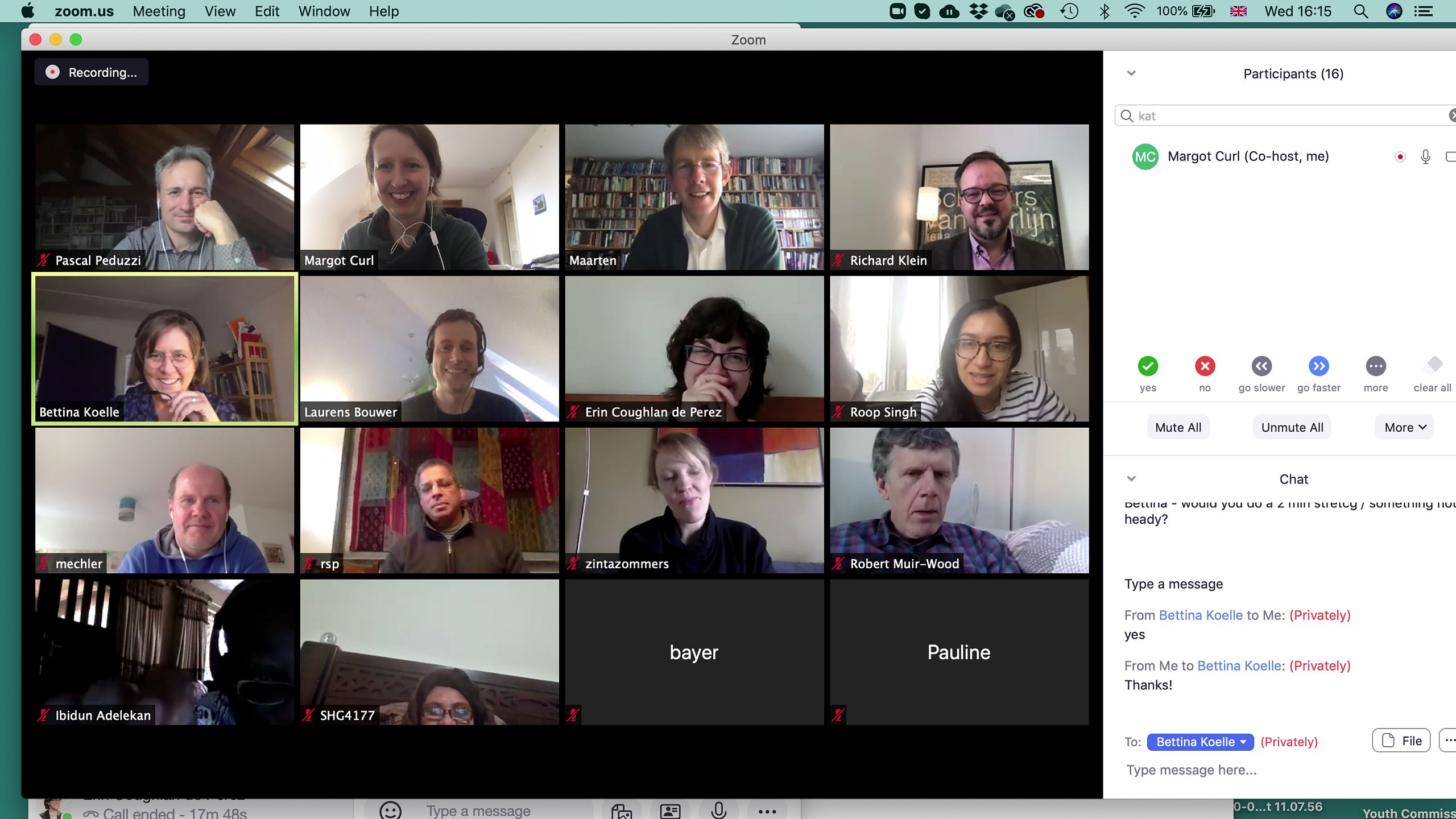
In this pivotal year much economic activity in the world ground to a halt as a result of the global Covid-19 pandemic.
But the disasters didn’t stop, as demonstrated in an analysis by the Climate Centre and the IFRC presented by President Rocca just ahead of the – largely virtual – UN General Assembly. Over 50 million people had already suffered the double impact of extreme weather and Covid just in the few first months of the pandemic.
The consequences were devastating, but the pandemic also forced change and presented opportunities – including an expansion of remote working.
We published our Virtually Amazing manifesto highlighting the urgent need for meaningful and interactive engagement in the virtual sphere. Virtually Amazing is based on design principles that re-imagine virtual engagement. The aim is to radically enrich events remotely, promoting a low-budget, low-carbon but high-energy way to stimulate creative engagement, and generating knowledge of climate, risk reduction, humanitarian work and more.
The Climate Centre quickly put the manifesto into practice, designing and facilitating numerous virtual events, ranging from high-level panels such as Anticipate and Act, organized by the Swedish government, to technical meetings with IPCC lead authors (photo), and a truly engaging Global Dialogue Platform that brought together people from all over the world to discuss anticipatory humanitarian action.
The Climate Centre has continued to experiment with new ways to engage people. The year saw remarkable growth in our use of humour to support learning and dialogue about difficult topics, chiefly in collaboration with artists from CartoonCollections.com, and a key innovation has been the humanitarian cartoonathon.
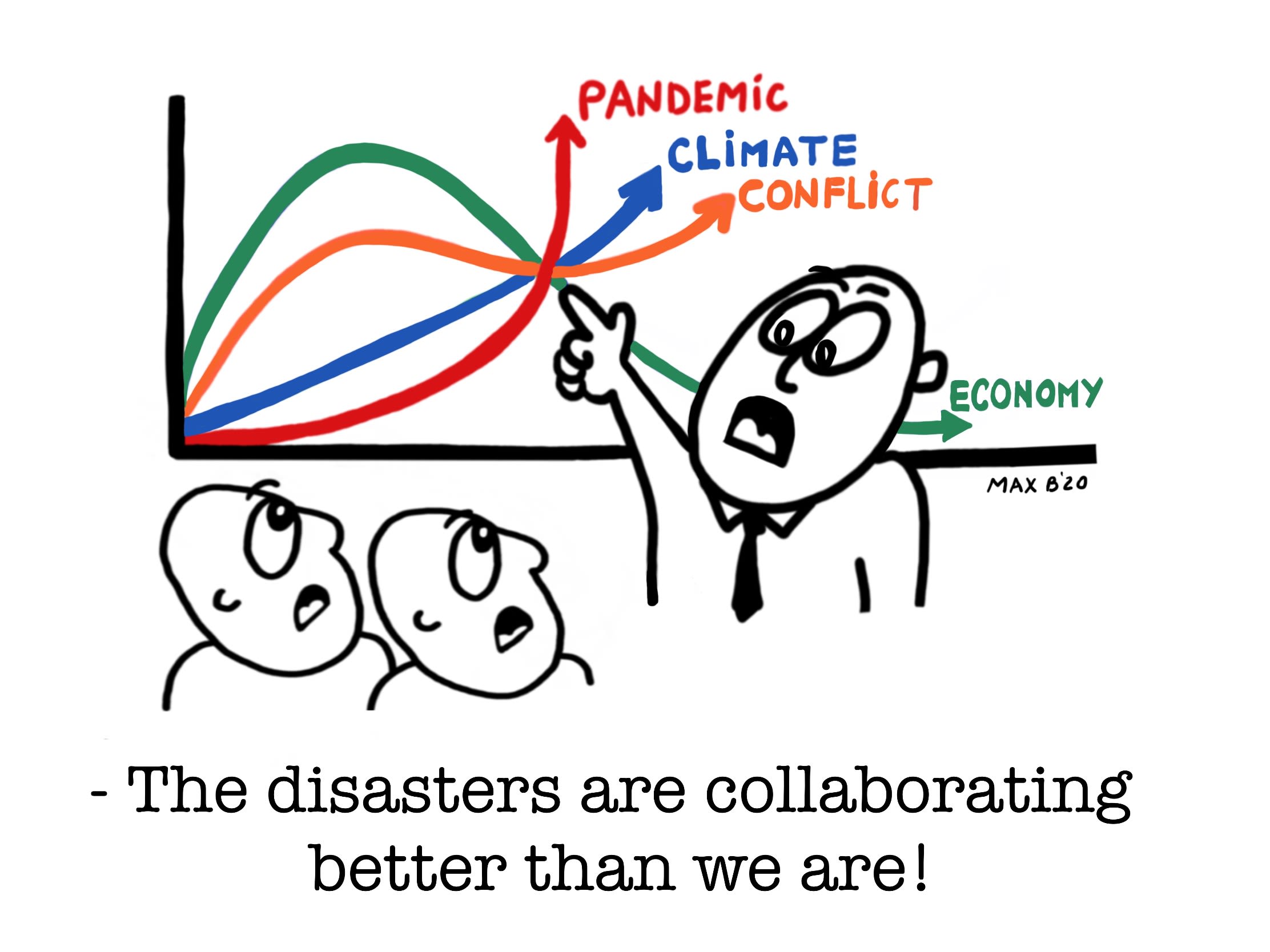
2020 cartoonathon. (Paul Bisca/CartoonCollections)
2020 cartoonathon. (Paul Bisca/CartoonCollections)
In September, the IFRC, the Climate Centre and the Solferino Academy, convened the first-ever virtual Climate:Red Summit, running for 30 hours straight and engaging over 10,000 participants from all the countries of the world, including national leaders.
The virtual format enabled participation by a wider set of people and stakeholders than a physical conference, demonstrating that a truly global event can be organized without the greenhouse gases of a traditional meeting; the virtual summit saved an estimated 25,000 tonnes of carbon emissions.
But the Climate Centre’s reach went beyond virtual events. In 2020, we launched our Can’t Take the Heat podcasts – short, informative talks reaching a wide audience worldwide.
Episodes feature scientists, humanitarians, city officials, young climate activists and others, covering topics from forecast-based financing, urban planning for heatwaves, Covid-19, and storytelling for young people; all with the aim of sharing the biggest issues and solutions where climate and people meet.
Neither interactive nor virtual engagement is new to the Climate Centre. We built on years of experience in creating meaningful engagement, facilitating complex dialogues, using serious games and the like. But 2020 was a pivotal year in scaling up our virtual engagement and indeed becoming virtually amazing.
Partners for Resilience
‘Let’s celebrate and replicate all these inspiring and practical cases of climate action’
– Maarten van Aalst, Climate Action
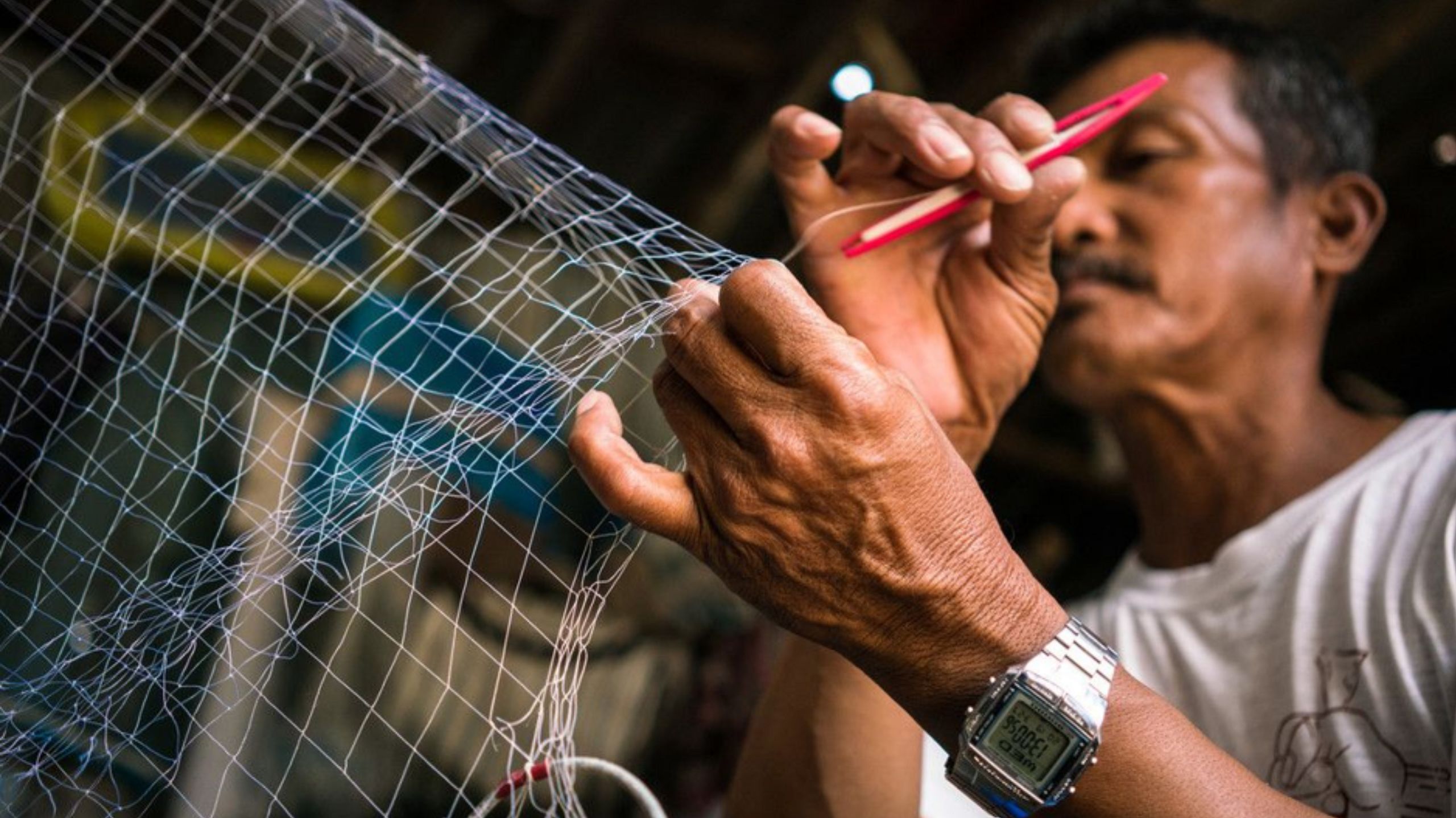
The year was the last of country-level implementation by the Partners for Resilience (PfR) alliance. After a decade of successful collaboration in 11 project countries, we are very proud of the results. The partners inspired meaningful climate action around the world and generated many excellent examples of adaptation, as highlighted in a special report published last year.
We are also proud of the widespread recognition of the resilience and integrated risk management approaches as vehicles – in national and international policies and strategies – for adaptation to changing climate- and ecosystem-risks.
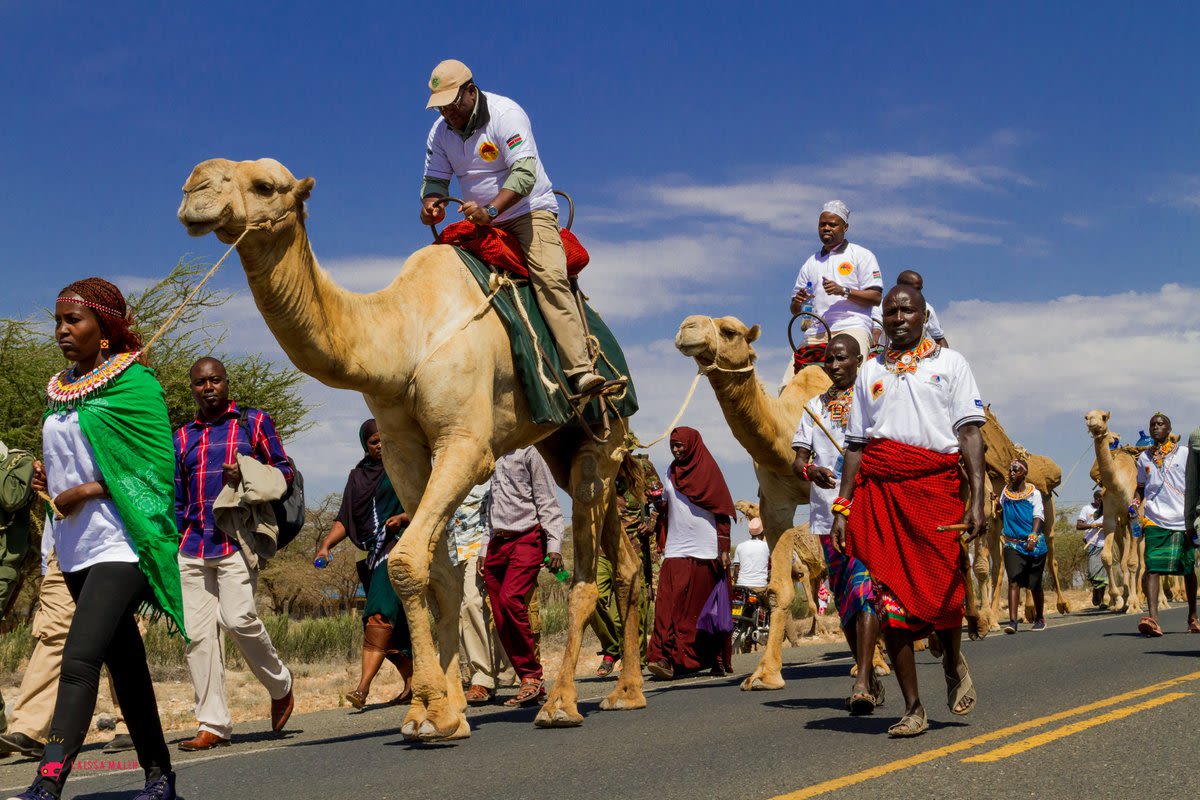
The six-day, 240km camel caravan to advocate for ecosystems and co-existence among the communities along Kenya’s shrinking Ewaso-Ngiro river. (PfR-Wetlands International)
New international initiatives such as the Risk-informed Early Action Partnership (REAP) also continued to be supported by PfR.
With a strong focus on strengthening capacities during PfR, the Climate Centre developed further guidance on climate-smart programming (also available in Spanish and French), issued last March, which incorporates many of our key themes in resilience, disaster risk reduction (DRR), and health, for example.
The Climate Training Kit also underwent a major overhaul, supporting National Societies and their partners to deliver inclusive adaptation on the ground, especially a module on community resilience and climate that provides tools and approaches to investment in integrated risk management.
This supported the IFRC’s 2020 Enhanced Vulnerability and Capacity Assessment toolbox for participatory community planning that encompasses risks as well as ecosystems and landscapes as risk modifiers.
Over the past decade, National Societies involved in resilience initiatives have positioned themselves in work with their governments to support important international agreements such as Sendai, Paris, the global goals, and the New Urban Agenda, as overarching ways to address rising risks and climate-related vulnerability.
PfR has created an online library with a huge range of tools and case studies from (alphabetically) Ethiopia, Guatemala, Haiti, India, Indonesia, Kenya, Mali, Nicaragua, Philippines, South Sudan and Uganda.
PfR components will continue to collaborate in 2021 and beyond to promote transformational change in the face of rising disaster risk, climate change and environmental degradation.
Resilience is needed now more than ever, especially after the Covid-19 pandemic and growing levels of uncertainty.
We see how the world is far from on course to meet the Paris Agreement, and the burden of climate change and ecosystem degradation on humanity is growing.
We will need to reduce emissions to stave off even worse consequences, but in the meantime, we have to get smarter before disaster strikes, with inclusive, transformational adaptation options for the most vulnerable populations.

The six-day, 240km camel caravan to advocate for ecosystems and co-existence among the communities along Kenya’s shrinking Ewaso-Ngiro river. (PfR-Wetlands International)
The six-day, 240km camel caravan to advocate for ecosystems and co-existence among the communities along Kenya’s shrinking Ewaso-Ngiro river. (PfR-Wetlands International)
EARLY ACTION
‘We have reached a stage where we don’t have to prove the relevance and effectiveness of anticipatory approaches. They save lives, use less money, and are more dignified’
– Thomas Zahneisen, Director of Humanitarian Assistance, German Federal Foreign Office
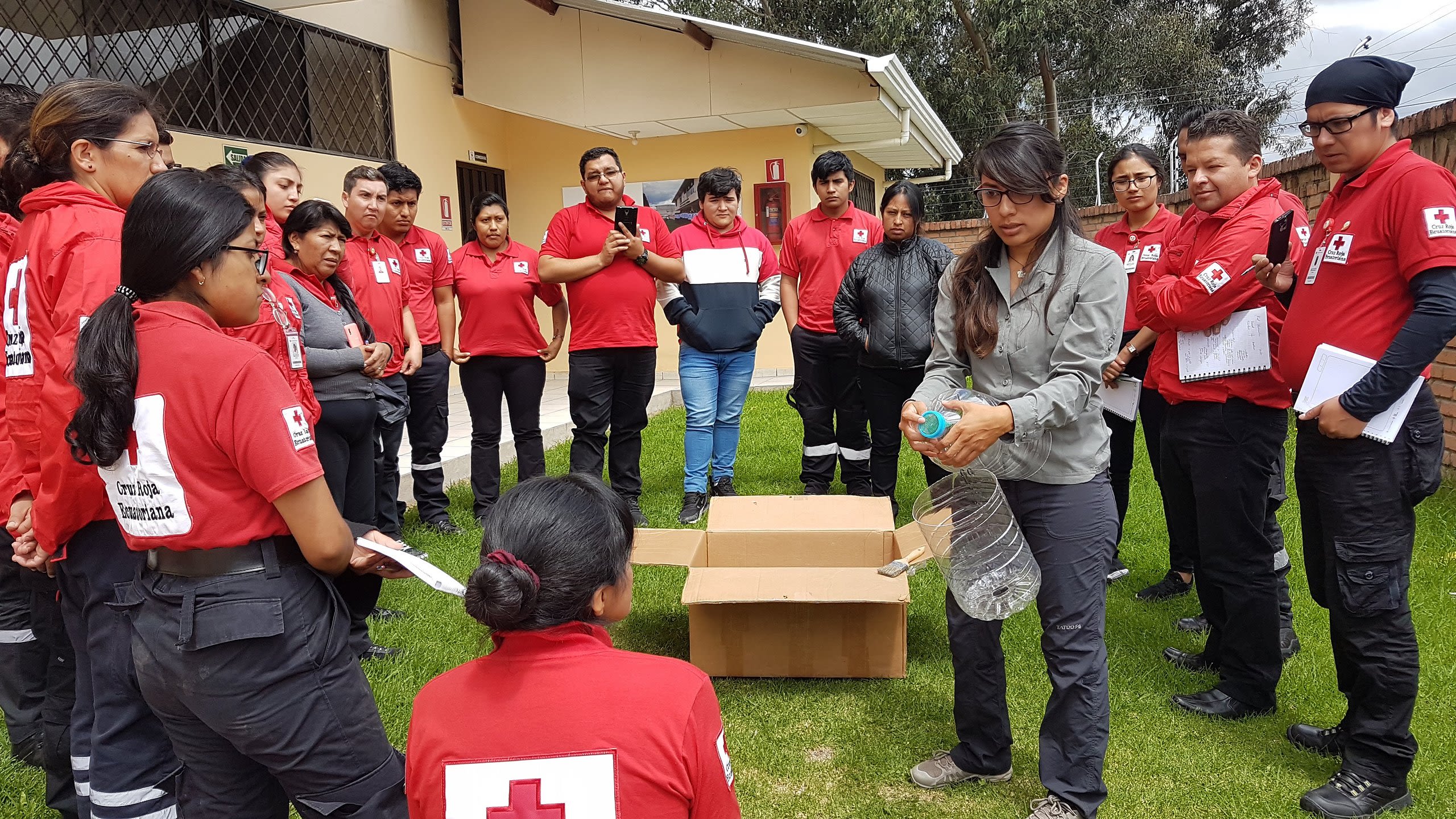
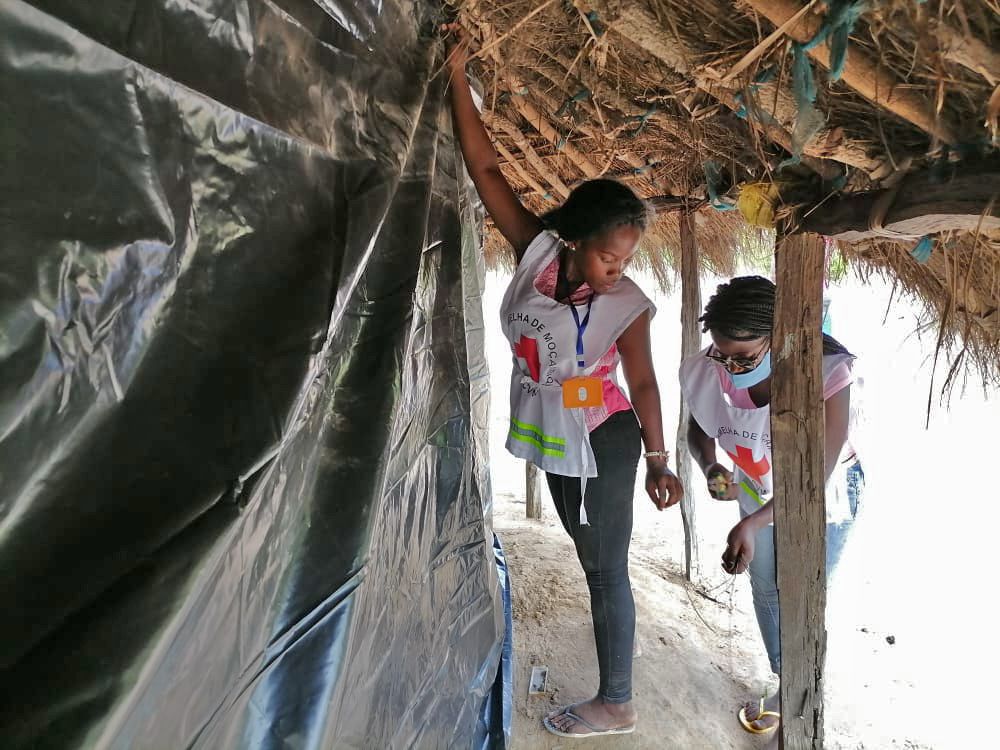
The Mozambique Red Cross strengthened shelters for 1,500 families in December under the IFRC’s DREF forecast-based action protocol as Cyclone Chalane loomed. (IFRC)
The Mozambique Red Cross strengthened shelters for 1,500 families in December under the IFRC’s DREF forecast-based action protocol as Cyclone Chalane loomed. (IFRC)
Government forecasts in Mongolia that more than half the country was at risk of another dzud triggered the release of more than US$ 200,000 to the local Red Cross – the first time such forecast-based action supported by the IFRC’s Disaster Relief Emergency Fund was used anywhere in the world.
In May the Bangladesh Red Crescent Society (BDRCS) activated its early action protocol to prepare for Cyclone Amphan, supporting 20,000 vulnerable people with a grant of nearly US$ 150,000 from the IFRC’s DREF-based fund.
Then in June a forecast of extreme flooding on Bangladesh’s Jamuna River again triggered early action by the BDRCS, with teams helping at least 16,500 people most at risk with a grant of US$ 240,000 from the same source; they assisted with local evacuation and provided unconditional cash.
While we are making a tangible difference with these targeted allocations to specific groups, forecast-based early action is now starting to go to scale.
The Red Crescent worked closely with UN partners in Bangladesh, who used the same forecast triggers developed by the Red Cross Red Crescent to release more than US$ 5 million from the UN Central Emergency Response Fund, providing about 30,000 households with cash payments of over US$ 50.
“Acting early is cheaper, more effective and more humane,” UN humanitarian chief Mark Lowcock said at the time.
In the Pacific, the Climate Centre provided remote support to early warning in 2020 using a rainfall monitoring system. In a September workshop, meteorological experts identified areas most at risk and developed drought-preparedness actions.
Expanding its work in the Pacific, the Climate Centre provided expertise in forecast-based financing to a new US$ 50 million project of the Green Climate Fund, led by UNEP, whose director, Inger Andersen, described the decision to invest in climate information as “an important contribution to adaptation planning and science”.
In July, the Climate Centre produced a guidance note on early action for drought, including a decision tree to guide practitioners in early warning.

The Mozambique Red Cross strengthened shelters for 1,500 families in December under the IFRC’s DREF forecast-based action protocol as Cyclone Chalane loomed. (IFRC)
And early action is expanding the range of applications, going beyond climate- and weather-related emergencies. In September, the Ecuador Red Cross activated its DREF-based early action protocol when the Sangay volcano began to spew ash. Teams of volunteers distributed family health kits including masks, eye protection, and tarpaulins.
To efficiently support the continued scale-up of anticipatory action, the German Red Cross, IFRC and Climate Centre launched the new Anticipation Hub in December, with more than 60 partners across the Movement as well as governments, universities, research institutes, NGOs, UN agencies and other networks.
Looking at especially vulnerable contexts, where conflicts and disasters collide, the Climate Centre contributed to thinking on anticipatory action in conflict settings, including input to the World Disasters Report and a jointly authored working paper, An Agenda for Expanding Forecast-Based Action to Situations of Conflict.
Related events we took part in included sessions at OCHA’s February Humanitarian Networks and Partnerships Week, the June Climate and Security Conference in Berlin, and the Climate:Red Summit in September.
In May the Climate Centre helped design a workshop on FbF for the IFRC’s Middle East and North Africa region and worked with the ICRC in the context of the new Anticipation Hub, for which we supported research and framed terms of reference for practitioners focused on conflict.
We also initiated an ECHO-supported project on forecast-based action and shock-responsive social protection in Nepal, with the Nepalese and Danish Red Cross and others.
Policy and advocacy
‘The Covid-19 pandemic and its indirect economic impacts provide an X-ray of our strengths and our vulnerability’
– Solferino Academy leadership voices, opinion piece
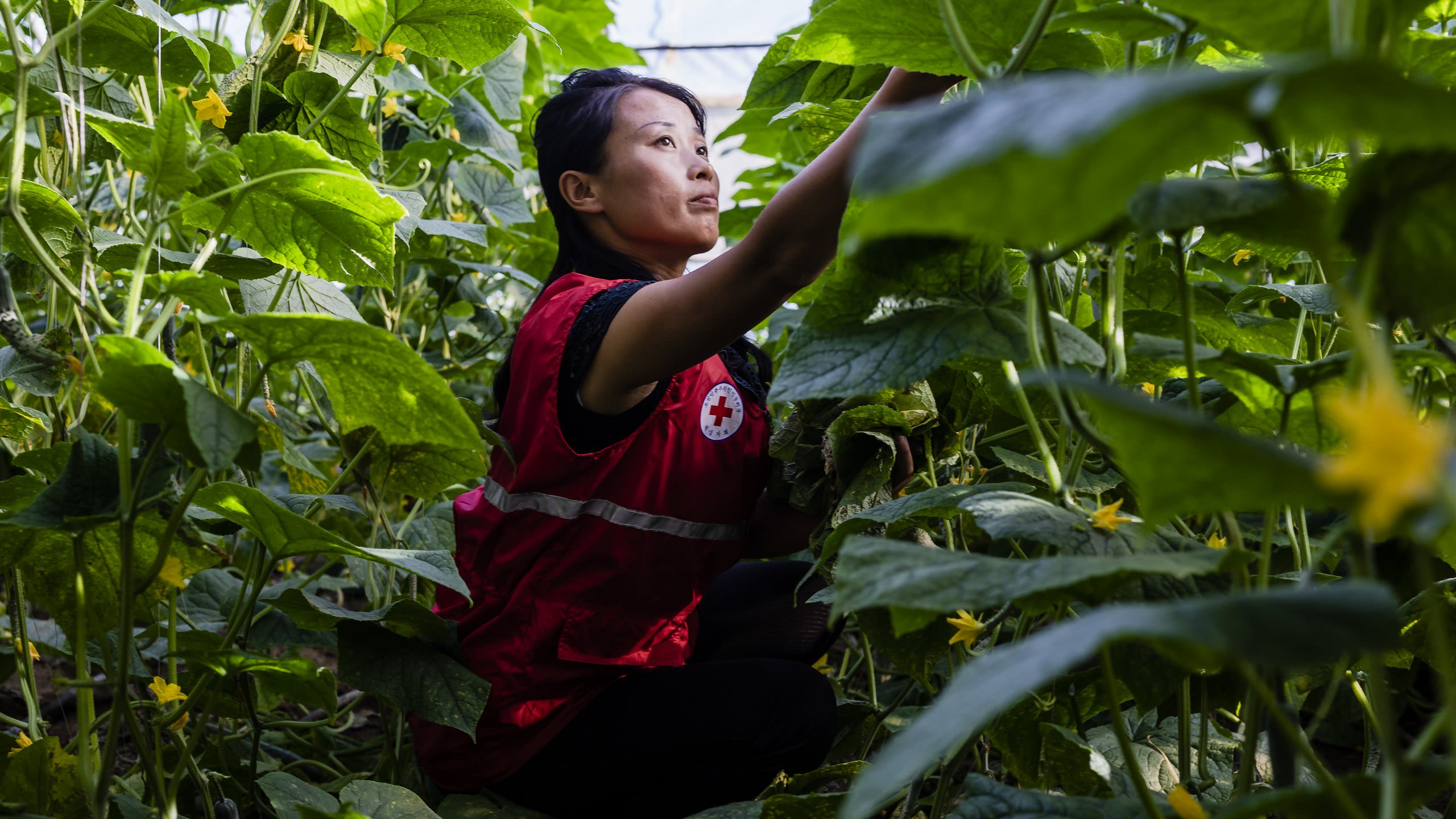
Following up on the strong imperative on climate from the IFRC General Assembly and the International Conference of the Red Cross and Red Crescent at the end of 2019, the new Movement Ambitions to Address the Climate Crisis spelt out how 192 National Societies, 165,000 branches and some 12 million active volunteers, as well as the IFRC and ICRC will make their work “climate-smart and increase our climate change adaptation and disaster risk reduction efforts, working with communities on the front lines of climate change.”
The Climate Centre will serve as the principal technical resource to achieve these ambitions, providing scientific analysis, developing and supporting the use of tools and guidance material, the document said.
The International Federation launched its Global Plan 2021 detailing its ten-year Strategy 2030 that has climate change at its heart.
The IFRC’s flagship report on disaster focused entirely on climate change for the first time, and there were important contributions from the Climate Centre. World Disasters Report 2020: Come Heat or High Water demonstrated that countries most vulnerable to climate-related disasters receive only a fraction of the funding available for adaptation and thus struggle to protect people.
The report called for a significant scaling up of investment in climate-smart actions, laws and policies that strengthen risk reduction and preparedness.
Connecting our evidence and calls for action to the broader climate and development landscape, we continued to support the Risk-informed Early Action Partnership (REAP) launched at the 2019 Climate Action Summit, and connects the long-term adaptation agenda to specific commitments to address the risks already facing vulnerable communities.
As an example of the implementation of these commitments, the IFRC not only continued to increase investment in anticipatory action but also to call for bringing the humanitarian, development and climate agendas together to break down silos and achieve greater impact at local and country level.
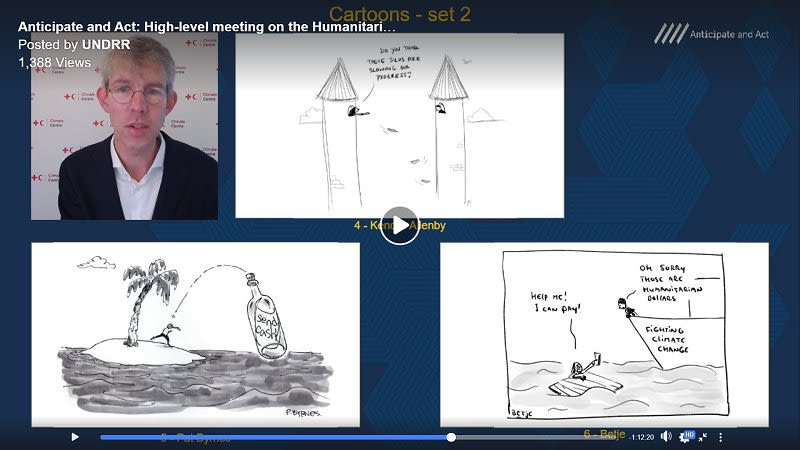
A video playback grab of Maarten van Aalst moderating the Stockholm high-level Anticipate and Act event which included cartoons drawn in real time highlighting key discussion points. (Cartoon Collections)
A video playback grab of Maarten van Aalst moderating the Stockholm high-level Anticipate and Act event which included cartoons drawn in real time highlighting key discussion points. (Cartoon Collections)
Climate Centre Director Professor Maarten van Aalst moderated the Stockholm virtual high-level meeting on the humanitarian impacts of climate change, Anticipate and Act, jointly hosted by the Swedish government, the United Nations Office for Disaster Risk Reduction (UNDRR) and the World Food Programme, in collaboration with the Swedish Red Cross (photo).
In its Words into Action publication, UNDRR aimed to ensure worldwide access to expertise, communities of practice and networks of DRR practitioners.
The report describes the special unit for young people in the latest edition of the Climate Centre’s Climate Training Kit as a “youth-friendly resource that aims to engage, educate and promote climate action”. In the section on play and innovation, UNDRR said our climate-related games such as Y-Adapt “inspire climate adaptation action and advocacy planning”.
We joined a task force of the global NDC Partnership to develop a plan to engage young people with its assistance to countries preparing nationally determined contributions.
In addition, given our expertise in risk reduction and vulnerability, we were invited to join the partnership’s expert thematic group, which aims to help governments integrate climate into economic recovery from Covid-19.
On the pandemic, a jointly authored op-ed by Maarten van Aalst and the IFRC’s Pascale Meige and Richard Blewitt called for the trillions of investments in recovery from the economic shock of Covid to be green, inclusive and resilient – a continuous theme in our 2020 advocacy.
Empowered by the evidence emerging during the pandemic that countries with stronger social protection systems were better able to cope with the shocks of the pandemic, our team working in this area initiated expert meetings on social protection in a changing climate, to gather experts and explore existing challenges for future climate scenarios and potential solutions.
Urban heat
‘The IPCC has high confidence that hot extremes will increase in all inhabited regions due to climate change…rising temperatures will exacerbate the urban heat-island effect’
– World Disasters Report 2020, Come Heat or High Water
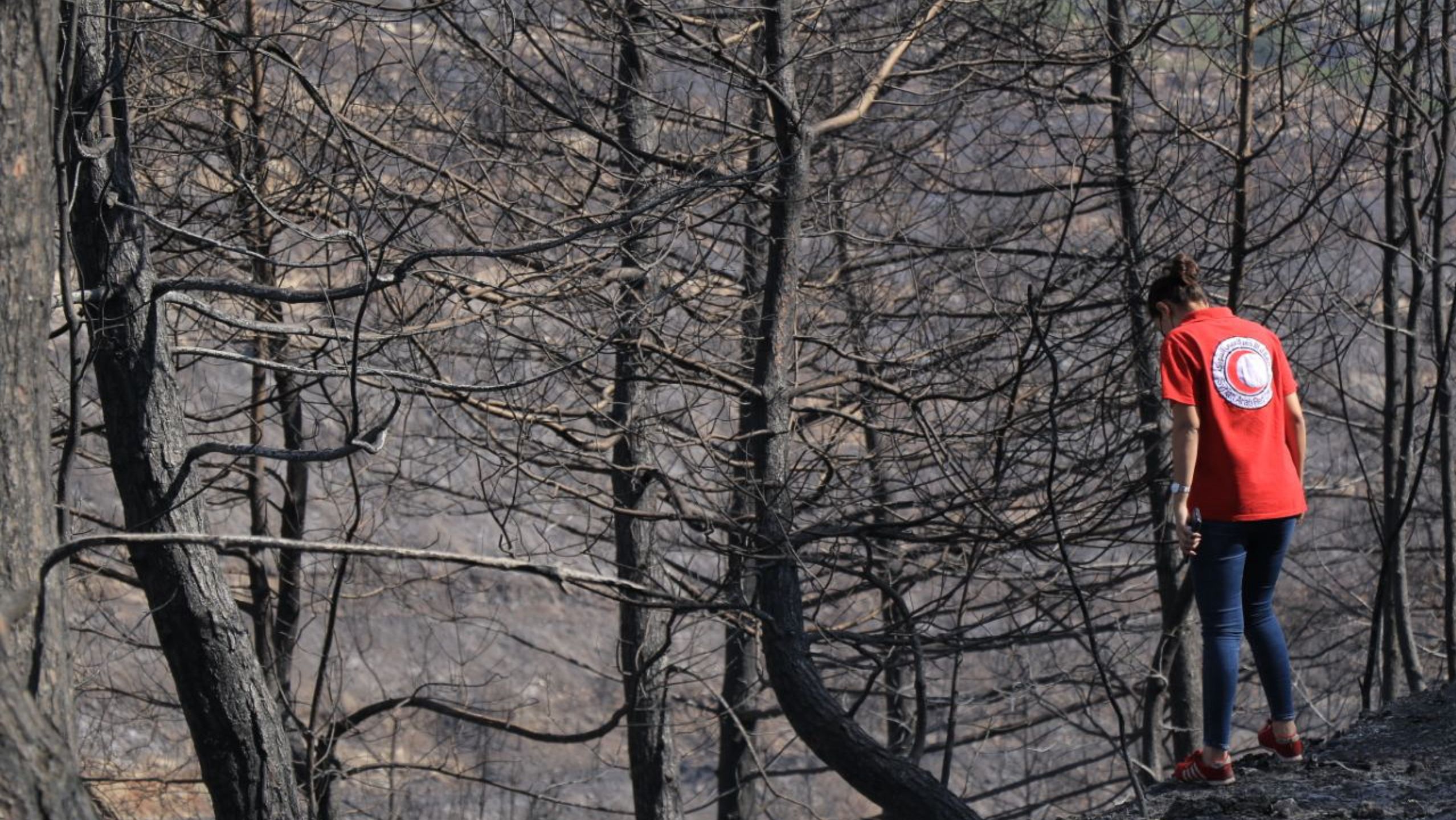
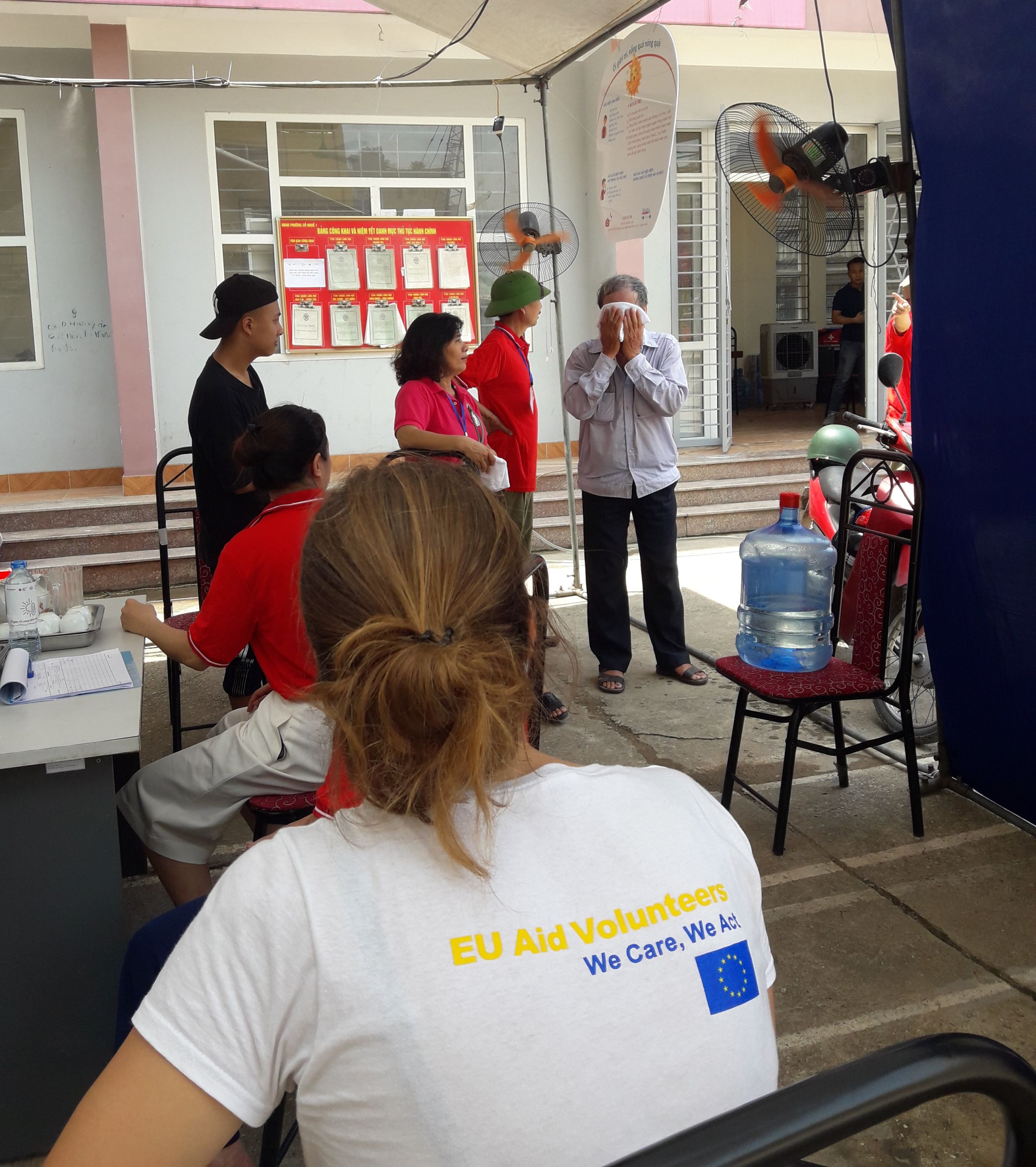
The Vietnamese Red Cross provides both cooling and advice on what to do in heatwaves; 2020’s lasted longer than most. (Vietnamese Red Cross)
The Vietnamese Red Cross provides both cooling and advice on what to do in heatwaves; 2020’s lasted longer than most. (Vietnamese Red Cross)
Twenty-twenty saw the Climate Centre’s urban work urban expand in, especially, the priority area of extreme heat.
One of the big achievements of the year was the development of an Urban Action Kit to encourage local action to build resilience – a quick-start, low-cost guide to urban resilience that was distributed to over 50 countries and is now available online in 12 languages.
The kit was developed by the IFRC and the Climate Centre in collaboration with the Global Disaster Preparedness Centre, Resurgence, and Wetlands International for communities and National Societies wishing to expand their work in urban areas with minimal resources.
The Climate Centre has continued to guide efforts to reduce the impacts of heatwaves on populations around the world. Alongside the Global Heat Health Information Network, we developed guidance on the double disaster of Covid-19 and heatwaves and strategies to mitigate both.
Unfortunately, the need for this was clear again in the summer with the possibility raised by the UK government, for example, of a “concurrent risk” of Covid-19 and heatwaves intersecting and amplifying impacts there, possibly through people’s reluctance to attend medical centres during the pandemic.
To complement last year’s guide for city officials, the Climate Centre released the City Heatwave Guide for Red Cross and Red Crescent Branches to help National Society volunteers and disaster managers act on extreme heat.

The Vietnamese Red Cross provides both cooling and advice on what to do in heatwaves; 2020’s lasted longer than most. (Vietnamese Red Cross)
IFRC President Francesco Rocca, presenting the guide, said it integrated “simple, low-cost, lifesaving actions into routine branch activities”. It includes activity cards to help a branch understand how extreme heat effects its city, what interventions to consider, and which populations to focus on.
In addition, the Climate Centre supported USAID to develop four companion guides to the Heatwave Guide for Cities to provide officials with technical background on heat impacts, alongside the key urban environmental issues of air and water quality, and waste management.
The Climate Centre also expanded its network of partners, joining the Atlantic Council’s Adrienne Arsht-Rockefeller Foundation Resilience Center and some 30 global agencies in the Extreme Heat Resilience Alliance to rally “critical capabilities and networks to tackle the growing threat of extreme urban heat for vulnerable people worldwide.”
The alliance groups city leaders with experts in public health, finance, humanitarian assistance, disaster management, climate science, risk, insurance, and public infrastructure.
In the context of FRACTAL, the Climate Centre worked with partners in Southern Africa to help cities to embrace long-term climate information in policy and decision-making.
City Learning Labs were continued virtually in 2020 and a FRACTAL fellowship programme was hosted to develop capacity in Southern African cities and institutions for virtual learning.
The Climate Centre also worked with a number of regions in Europe as part of the Deep Demonstration project, engaging with regions and cities in Italy (Dolomiti), Spain (Andalusia), Scotland (Glasgow) and France (Nouvelle Aquitaine); facilitating virtual events and approaches such as the virtual social transformation walk and an app that places cartoons in a virtual environment.
ICRC
‘There are visible signs of climate change at practically every turn in this environment’
– ICRC President Peter Maurer (Niger and Burkina Faso, September)
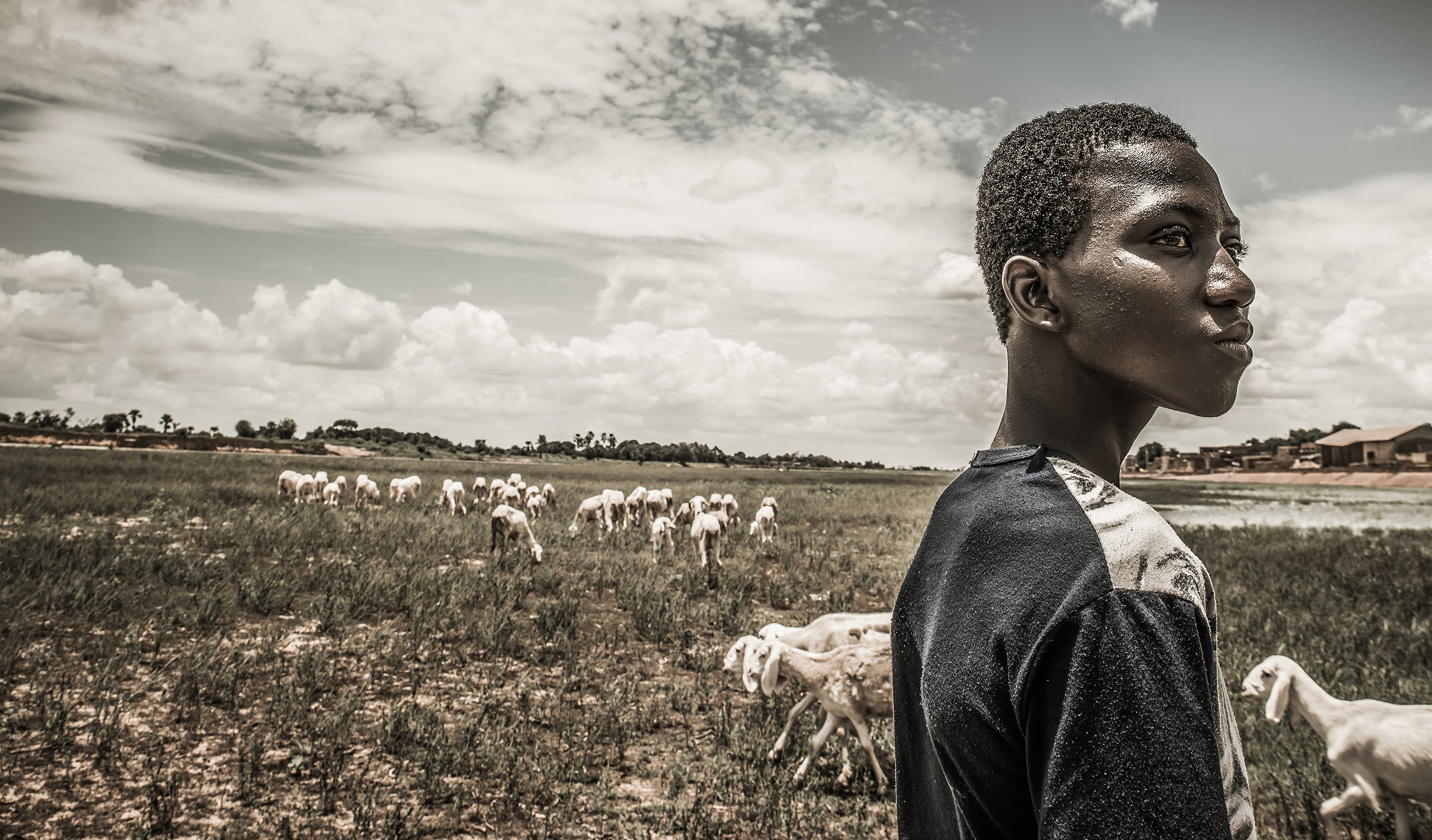
We joined the external advisory committee for the ICRC’s flagship report, When Rain Turns to Dust, based on research in southern Iraq, northern Mali and the Central African Republic, its most important report to date on climate.
It explores people’s experience with conflict and climate risks, their ways of coping and adapting and how, in the absence of adequate support, they may be forced to drastically change their way of life, diversify their livelihoods, or even be displaced altogether.
The ICRC, Climate Centre and VICE Media together designed sessions engaging young Asian journalists, activists, artists and humanitarians to highlight the report’s findings, as well as other sessions for the ICRC’s global innovation meeting.
Also reflecting the International Committee’s expanding interest in climate, ICRC President Peter Maurer, at the end of a visit to the Horn of Africa, said millions of people there are trapped in near-constant crisis as the combination of droughts, floods, and violence forced them from their homes or eroded already very fragile livelihoods.
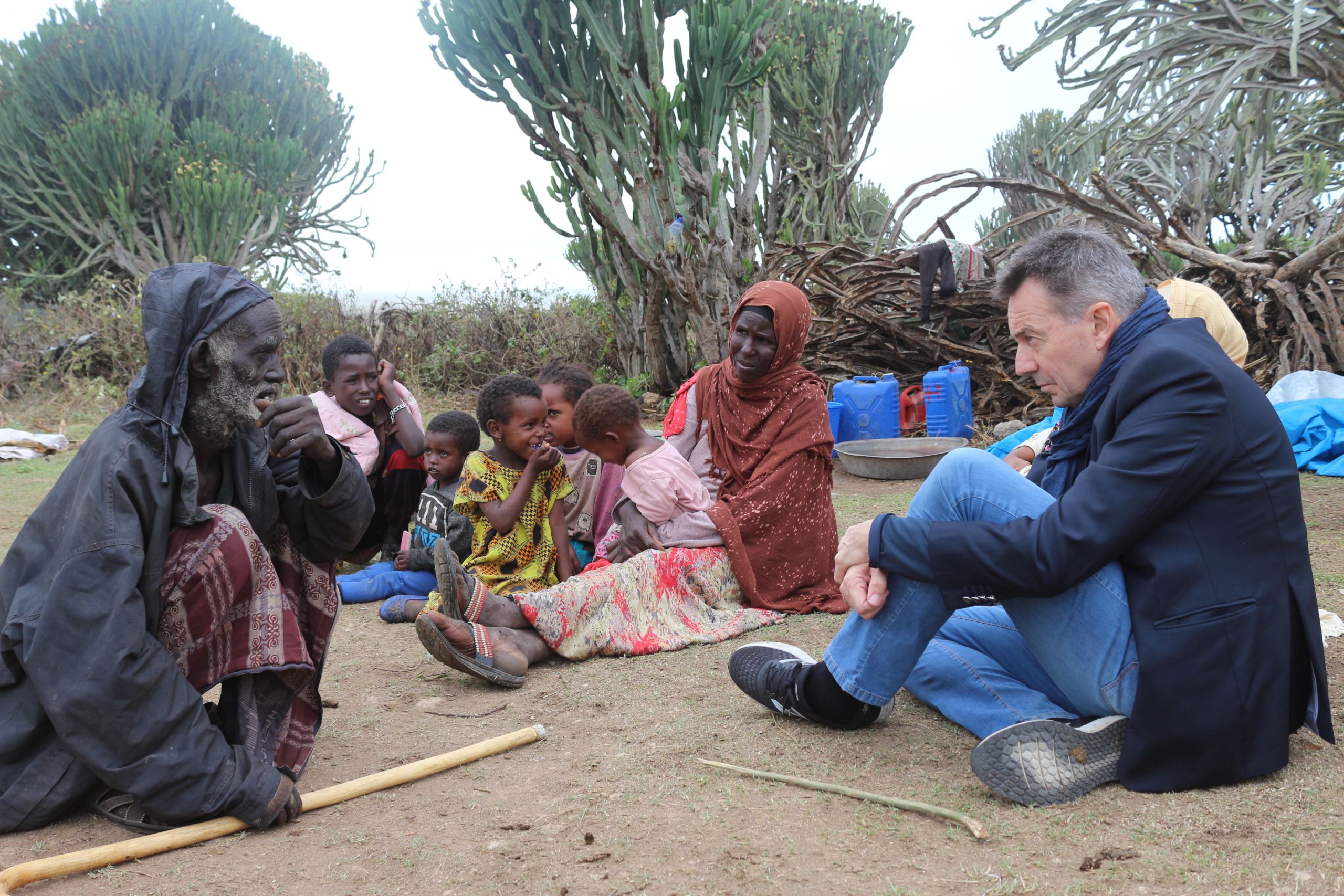
ICRC President Peter Maurer speaks to villagers during his visit to the Horn of Africa in January 2020, when he said people suffering amid climate shocks and conflict are “are trapped in near-constant crisis”. (Mike Mina/ICRC)
“People in Ethiopia, Somalia, and other parts of eastern Africa are increasingly caught between deadly extremes,” Maurer said.
After subsequent visits to Niger and Burkina Faso, he told the Security Council that “communities living on the front lines of war, violence and devastation are more frequently and urgently citing climate shocks as a key issue of concern, alongside poverty, injustice, exclusion and weapons availability.”
The Climate Centre expanded its support to ICRC work through a project for more than 20 country and regional climate fact-sheets with information on how climate impacts key humanitarian sectors.
The ICRC, IFRC, Climate Centre, and the Nigerien and German missions organized a briefing at the Belgian mission to the UN in New York, including details on the outcomes of the 2019 climate and conflict round tables.

ICRC President Peter Maurer speaks to villagers during his visit to the Horn of Africa in January 2020, when he said people suffering amid climate shocks and conflict are “are trapped in near-constant crisis”. (Mike Mina/ICRC)
ICRC President Peter Maurer speaks to villagers during his visit to the Horn of Africa in January 2020, when he said people suffering amid climate shocks and conflict are “are trapped in near-constant crisis”. (Mike Mina/ICRC)
Science and attribution
‘One of the most important things governments can do today is invest in better collection and analysis of data on disaster risks’
– IFRC Secretary General Jagan Chapagain and Andrew Steer, President of the World Resources Institute,
opinion piece
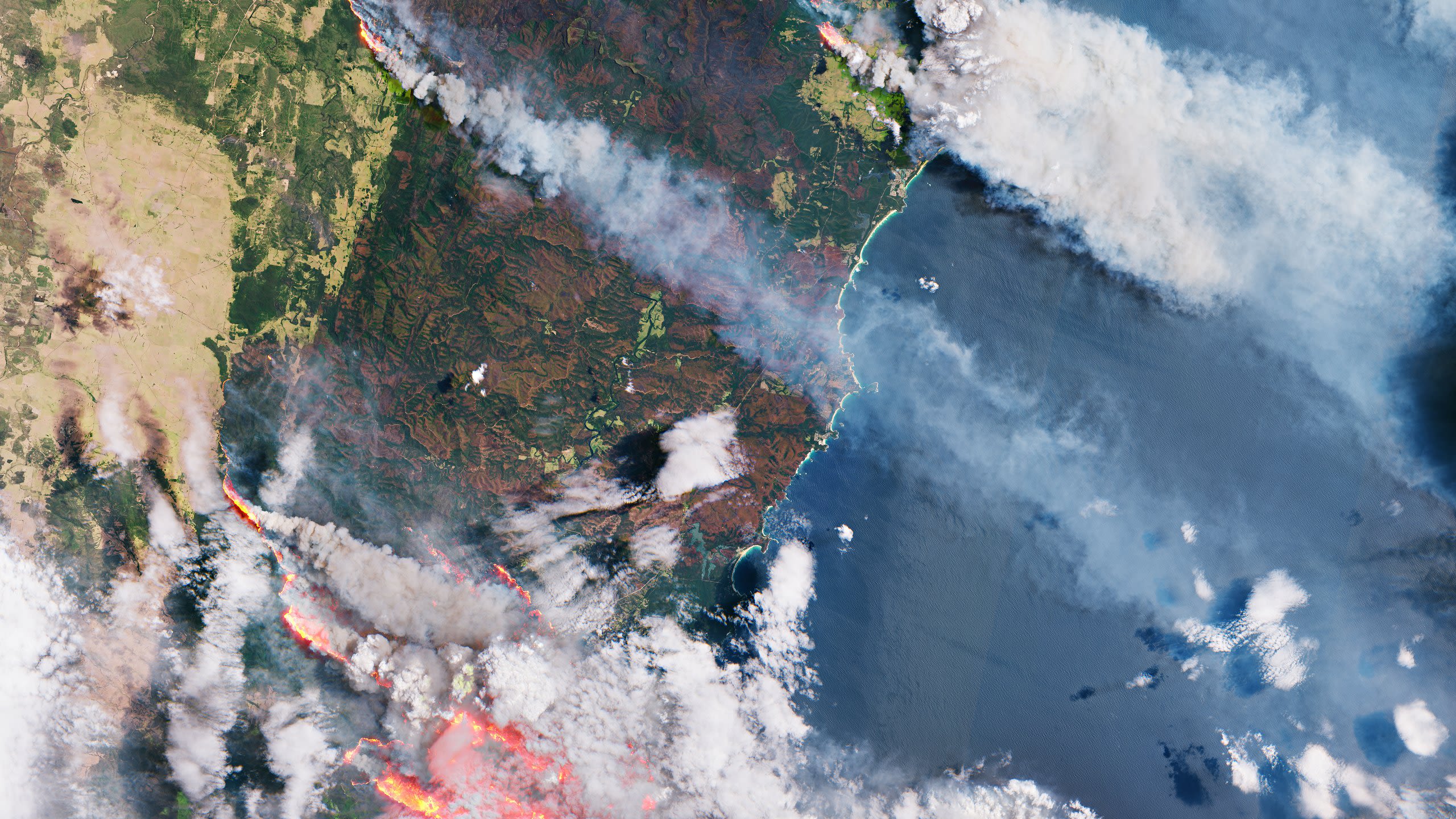
While climate science flows through much of the work of the Climate Centre, it seldom attracts as much media attention as with attribution, where we look at the climate influence on specific disasters.
Aptly for a year that, more than ever, highlighted that the climate crisis is already hitting us now, our first analysis looked at the Australian bushfires.
Scientists with the World Weather Attribution (WWA) consortium, including the Climate Centre, concluded that climate change increased the chance of the extreme fire-weather in Australia by at least 30 per cent. The 2019–20 bushfire disaster there triggered a major humanitarian response by the Red Cross and others.
Just a few months later, in one of its strongest attribution statements to date, WWA found that the exceptional 2020 heatwave in Siberia “would have effectively been impossible without human-induced climate change”.
Meanwhile, Dutch climate scientist Geert Jan van Oldenborgh, a leading WWA member, reported that smoke from the wildfires in the western United States had reached the Netherlands.
Maarten van Aalst later emphasized that heat is a “highly underestimated risk factor with major negative social and economic impacts”.
A 2020 attribution analysis of the European heatwave the year before, which the IFRC’s World Disasters Report pointed out was the world’s deadliest disaster, demonstrated that the odds of such event in the absence of human-induced climate change would have been extremely small.
As these examples establish, it was an important year in the field of climate attribution, where the Climate Centre is a key contributing partner.
The prestigious MIT Technology Review named attribution as one of its ten breakthrough technologies for 2020, among others ranging from artificial intelligence to quantum computing.
“By disentangling the role of climate change from other factors, [attribution] studies are telling us what kind of risks we need to prepare for, including how much flooding to expect and how severe heatwaves will get as global warming becomes worse,” said the MIT journal.
“If we choose to listen, they can help us understand how to rebuild our cities and infrastructure for a climate-changed world.”
The WWA group detailed the process by which they generate “numerical results actionable by stakeholders” in the journal Advances in Statistical Climatology, Meteorology and Oceanography.
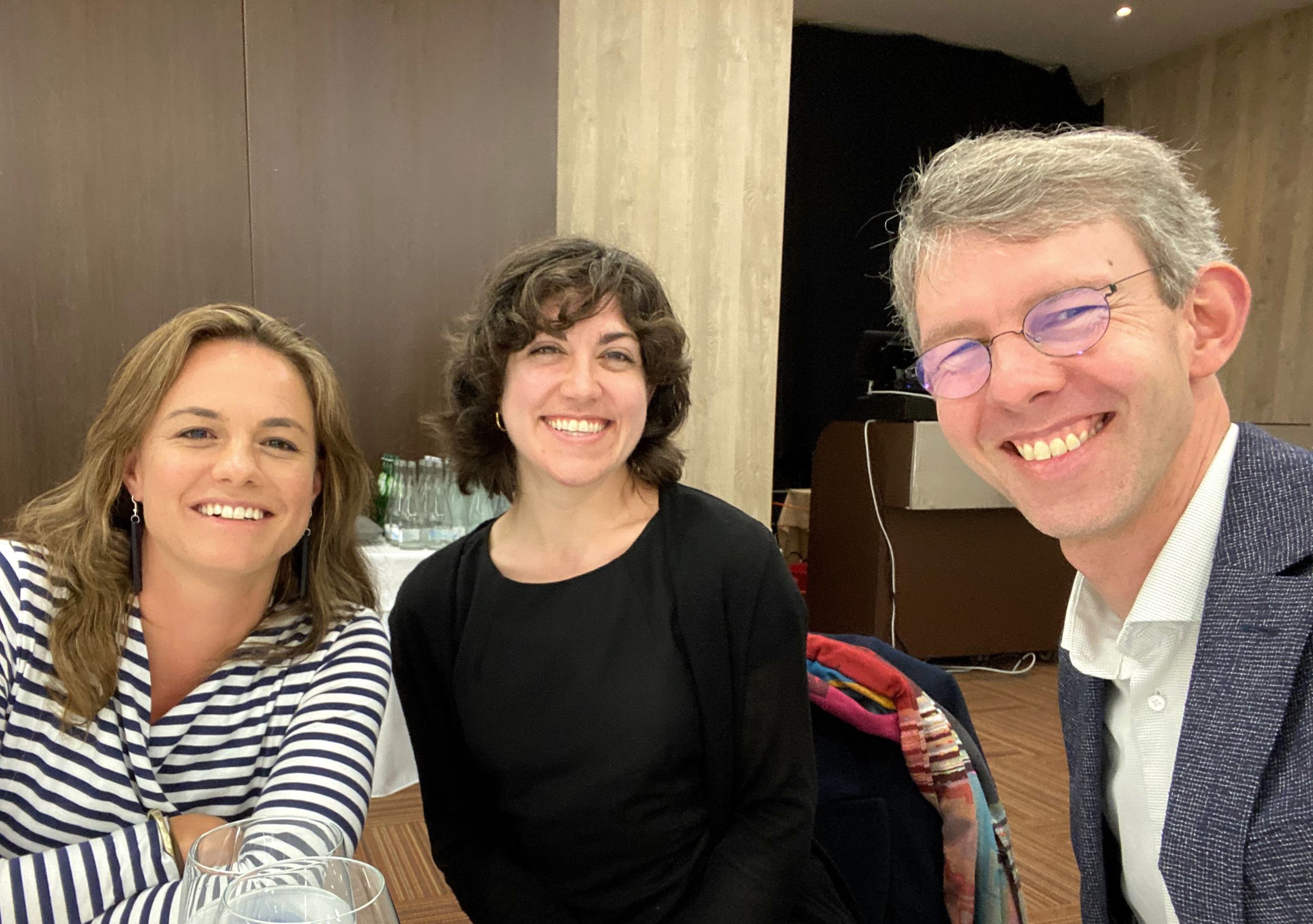
AR6 authors at a pre-lockdown Working Group II consultation in Portugal, (R to L), Climate Centre Director Maarten van Aalst; its Manager, Climate Science Erin Coughlan de Perez; Senior Pacific Climate Adviser Olivia Warrick. (Climate Centre)
AR6 authors at a pre-lockdown Working Group II consultation in Portugal, (R to L), Climate Centre Director Maarten van Aalst; its Manager, Climate Science Erin Coughlan de Perez; Senior Pacific Climate Adviser Olivia Warrick. (Climate Centre)
Professor Van Aalst told the online magazine of the Netherlands Entrepreneurial Development Bank: “Often science can be too abstract and large-scale when what we need is research that can be understood and useful to people on the front line. So a lot of our work involves trying to bridge those divides.”
And the Climate Centre is doing just that, at the interface of climate science, policy and practice. An example was the efforts of one of his PhD students to improve early-warning climate systems in conflict settings.
A new guide jointly authored by the IFRC and Climate Centre with the UK Met Office – The Future of Forecasts: Impact-based Forecasting for Early Action – represented a potential paradigm-shift in forecasting from what the weather will be to what it will do.
The IFRC’s Director of Disasters, Climate and Crises, Pascale Meige, said impact-based forecasting enabled complex scientific information to be made “actionable, enabling humanitarian interventions such as shelter strengthening by farmers in Philippine coastal regions before a typhoon makes landfall, or the distribution of veterinary kits to protect alpacas as source of livelihoods for families against cold waves in the Peruvian Andes.”
In the continuing global process that will culminate in the IPCC’s Sixth Assessment Report, international scientists including Maarten van Aalst and two senior Climate Centre colleagues held a week-long consultation in Faro, Portugal on the Working Group II contribution, covering climate impacts, adaptation and vulnerability (photo).
Youth
‘Young volunteers here are in the front line and are the first responders. They are the disaster representatives in their communities and have the tools to help people’
– Hansel Vatuinaruku, Fiji Red Cross volunteer
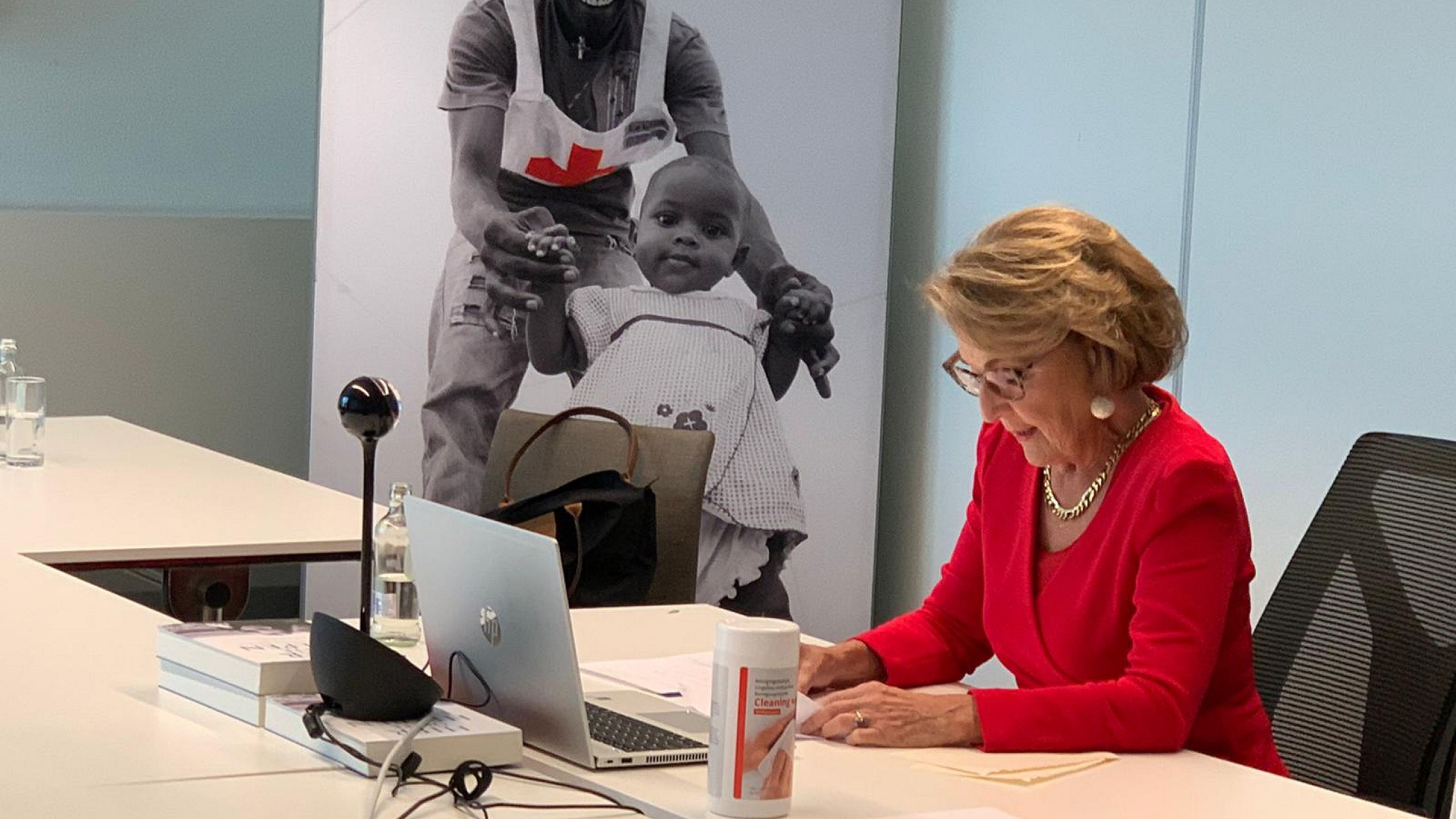
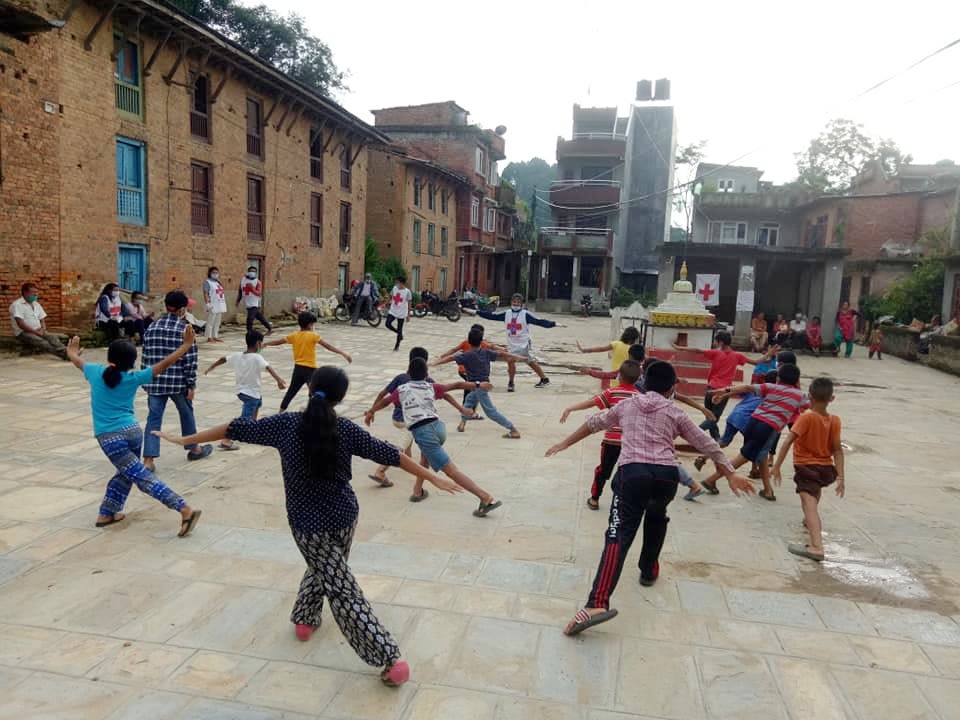
A Covid awareness programme for youngsters organized for the 2020 International Youth Day by the Thaiba branch of the Red Cross in Nepal, the most recent country to explore use of data with impact-based forecasting. (Nepal Red Cross Society)
A Covid awareness programme for youngsters organized for the 2020 International Youth Day by the Thaiba branch of the Red Cross in Nepal, the most recent country to explore use of data with impact-based forecasting. (Nepal Red Cross Society)
Two-thousand-and-nineteen was a big year for young people’s engagement in climate broadly, and in 2020 we built on this momentum, notably by jointly creating the first Red Cross Red Crescent strategy on youth-led climate action for 2021–25.
It’s a collaboration between the IFRC secretariat, the IFRC Youth Commission, the Climate Centre and young people all over the world.
Indeed, the strategy has not only been created for youth but also by youth. A series of consultations, surveys and virtual engagements were held in English, French, Spanish and Arabic. Over 1,200 young people from all over the world participated, demonstrating that Red Cross Red Crescent youth are eager and ready to act.
Last year was also one of partnership with youth. The Climate Centre partnered with the Children in a Changing Climate Coalition, along with the IFRC, the British Red Cross, the Global Disaster Preparedness Centre and the UK Met Office.

A Covid awareness programme for youngsters organized for the 2020 International Youth Day by the Thaiba branch of the Red Cross in Nepal, the most recent country to explore use of data with impact-based forecasting. (Nepal Red Cross Society)
In this partnership climate cards were created for children aged 7–12 from anywhere in the world, providing inspiring and interactive activities to engage them on the climate change agenda and call for climate action.
Due to the Covid-19 pandemic most of our planned Y-Adapt engagements were put on hold, but we took the opportunity to create a new module on urban climate action and instructional videos.
The Climate Centre took part in a task force that synthesized inputs from young people in more than 80 countries to develop an engagement plan, launched in December, for the NDC Partnership.
Our programme for junior researchers grew over 50 per cent in 2020 and engaged students from 15 countries.
Innovation
‘Cartoons are a very creative and dynamic way to influence humanitarian public opinion’
– Walter Cotte, IFRC Regional Director for the Americas, Climate:Red Summit
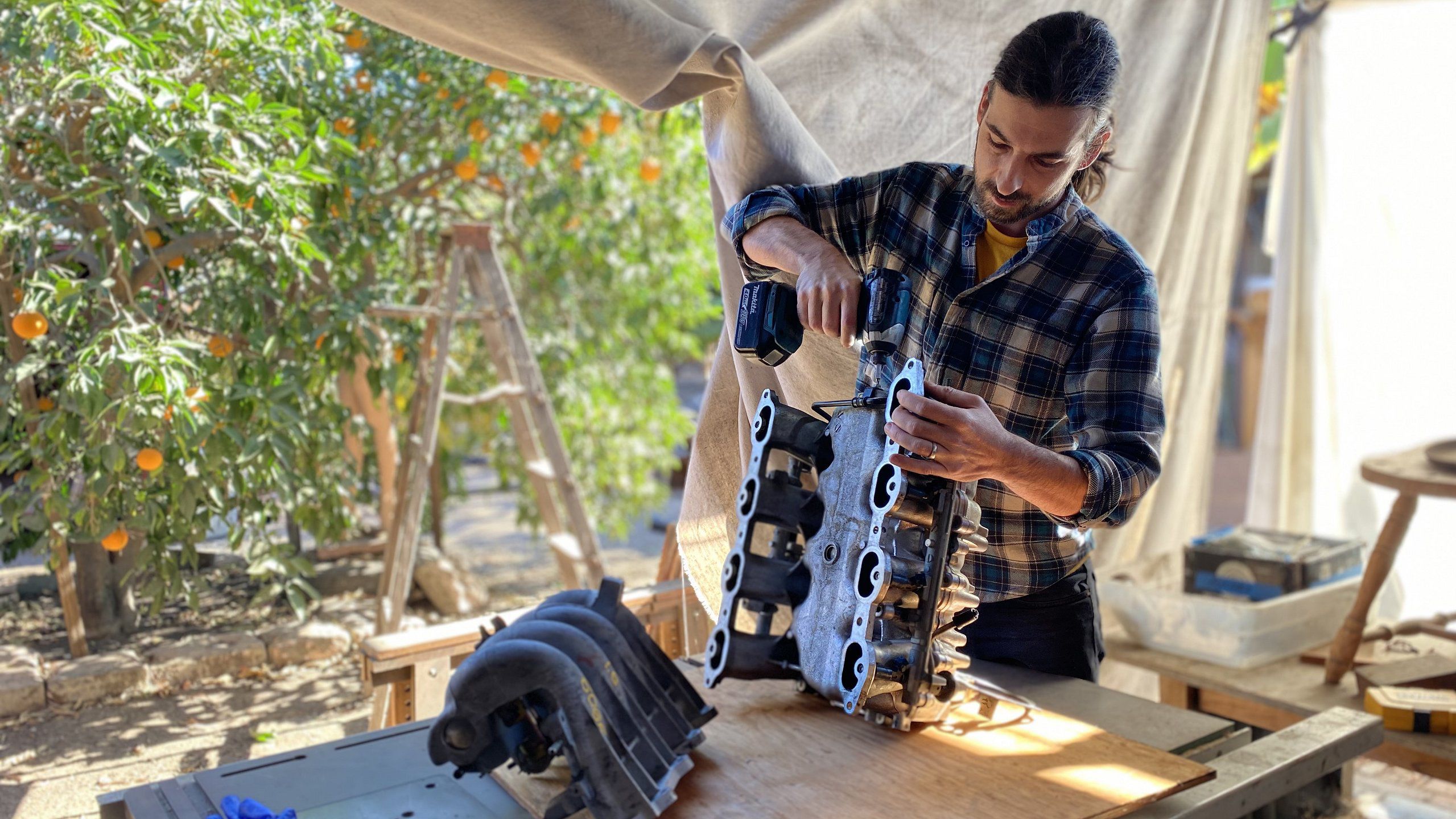
The Climate Centre continues to invest in diverse, innovative approaches to the management of climate risk: we are expanding what is done to link science, policy, and humanitarian practice, as well as asking new questions.
The year saw consolidation of our role in emerging issues, building on previous technology-enabled, people-centred explorations. For example, the Human Computation Institute approached us to support a platform for community-based ethical review of the artificial intelligence systems that are increasingly applied to humanitarian uses.
Our article in the journal Progress in Disaster Sciences describes a framework for evaluating machine learning as well as hydrological models in support of forecast-based financing and other humanitarian applications.
On the lighter side of tech, our cartoon augmented-reality app enables users to enrich their real-world environment by digitally adding climate-relevant cartoons through their mobile phones.
Geoengineering keeps growing in the discourse as a potential approach to adjusting the global climate by blocking sunlight with small particles added to the stratosphere to cool the planet – with enormous humanitarian implications.
The Climate Centre contributed to events such as C2G’s series on solar radiation modification and the sustainable development goals. We also ran two workshops convened by Open Society Foundations to help the philanthropic sector understand and engage with the issue, supporting the most vulnerable.
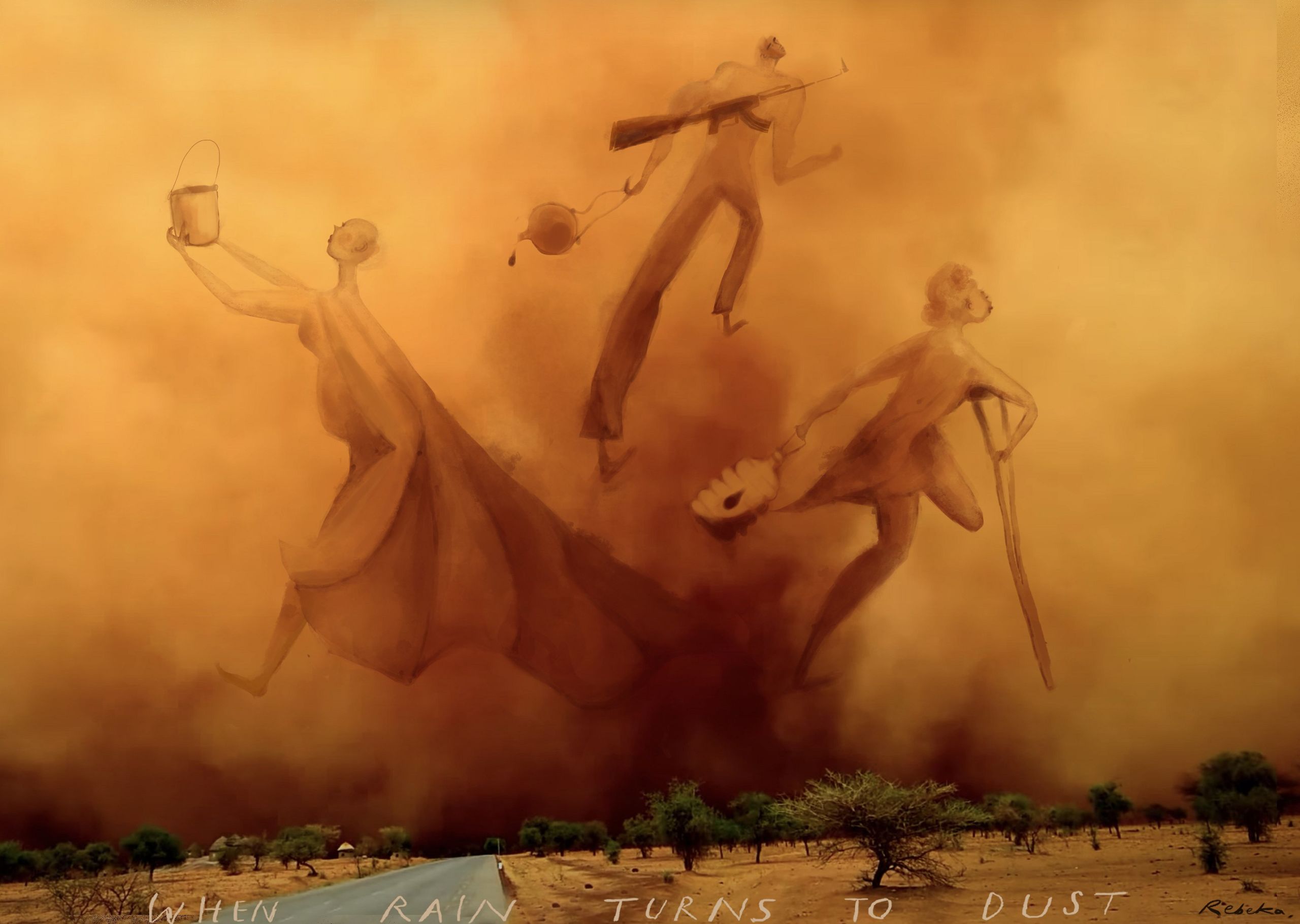
The UN expects more than half the world’s population to be living in water-stressed regions by 2050 – a danger illustrated in this cartoon last year. (Rebeka Ryvola/Cartoon Collections)
The UN expects more than half the world’s population to be living in water-stressed regions by 2050 – a danger illustrated in this cartoon last year. (Rebeka Ryvola/Cartoon Collections)
We have deepened our role in the growing social dimensions of climate risks, arguing for the crucial importance of engaging with anti-racism and gender, and other ways of addressing how discrimination and privilege both shape vulnerability and adaptation.
The Climate Justice Resilience Fund has recruited the Climate Centre to run cartoonathons on how race and gender are used to create disadvantages that need to be addressed.
Similarly, the Green Climate Fund Independent Redress Mechanism has engaged us to run sessions involving herders and other civil society stakeholders in Mongolia to understand options for channeling complaints from communities affected by GCF projects; humour has been crucial to enable these necessary conversations.
One key concern, aligned with the IFRC’s Strategy 2030, is the issue of mental health: mounting evidence demonstrates the threat of depression, anxiety, and mourning over climate change.
Developed with colleagues from the IFRC Psychosocial Centre and the BMW Foundation, our session From Darkness to Illumination: Climate Grief and Resilience in a Sea of Warnings was delivered at the 2020 Understanding Risk Forum, along with another on “reconciling intent, words and actions” involving a governance scholar, a professional humourist and a Senegalese chef.
After more than a decade of innovation, the Climate Centre is now widely recognized as a leading partner for identifying useful approaches linking knowledge and humanitarian work.
Communications
‘Attribution is only one step from observation of an extreme event to a successfully communicated statement’
– WWA scientists’ paper, Advances in Statistical Climatology, Meteorology and Oceanography
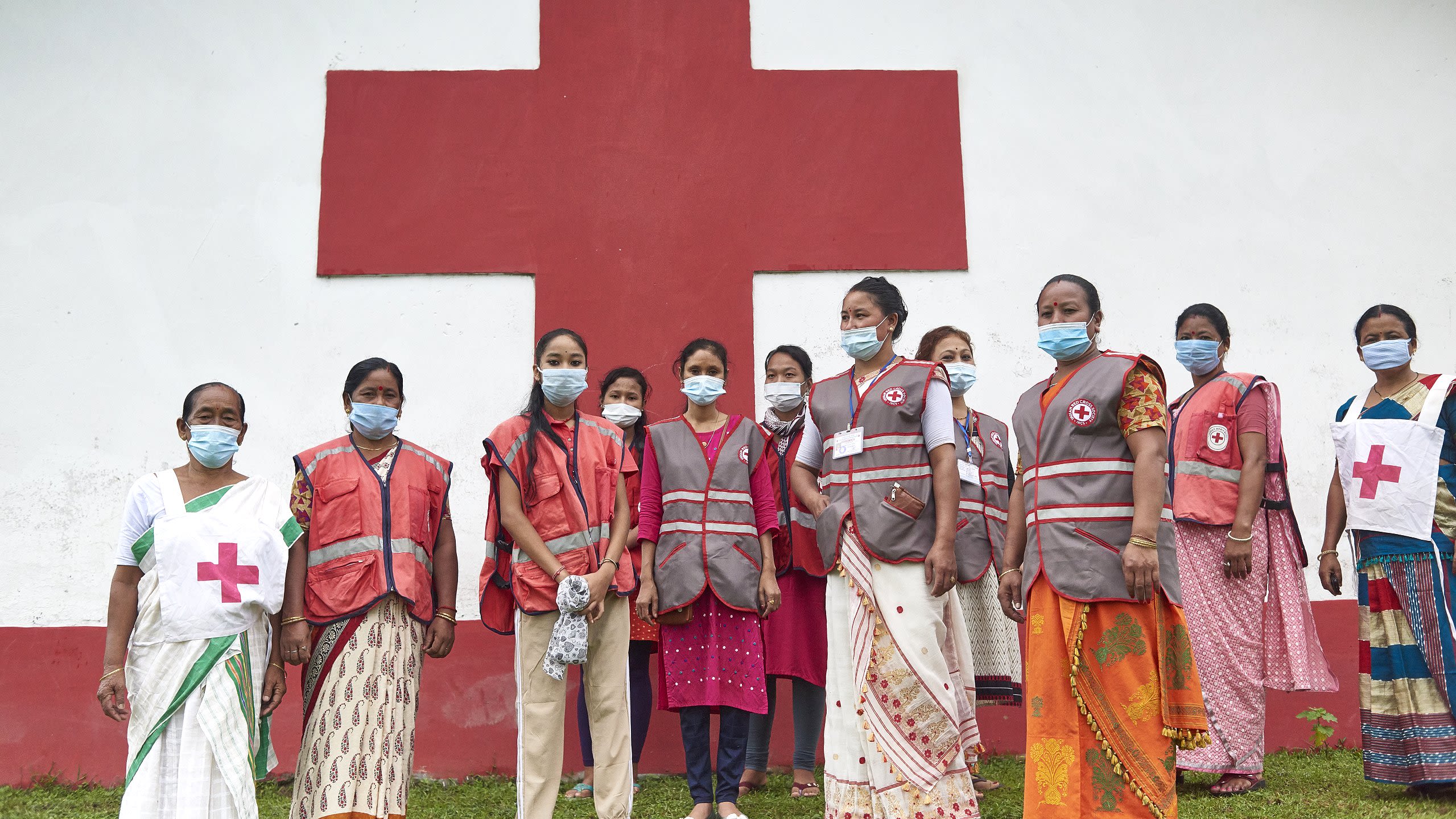
Our social-media audience continued to expand apace in 2020 across Twitter, Facebook and LinkedIn, and we branched out into new platforms including blogs, cartoons and a time capsule to be housed at the Red Cross Red Crescent Museum in Geneva and opened in 2050.
In the first of a series of blogs, the Climate Centre’s Sayanti Sengupta – after an expert meeting in London on social protection in future-climate scenarios – made the case that “we are facing a completely different climate as well as significant risks”.
Roop Singh, our Climate Risk Adviser, wrote about our games, especially one of the most successful that has been refined to include geoengineering, Altering the Climate; Eddie Jjemba, who works on urban programming and resilience initiatives in Africa, wrote about people displaced by climate change.
Our first news story of Lockdown 1.0 was an opinion piece by Maarten van Aalst, arguing that there were now two compelling reasons to travel less: carbon emissions generated by aviation and coronavirus.
Then in May, with the confluence of hazards the world was facing clearer than ever, he argued that a dramatic – but thanks to prompt evacuation not lethal – flash flood at Uganda’s Kilembe Mines Hospital (video) symbolized “the world of multiple risks we all now live in”.
Flash floods, River Nyamwamba, Uganda, May 2020. (Cameras: Denis Onyodi)
Flash floods, River Nyamwamba, Uganda, May 2020. (Cameras: Denis Onyodi)
In his third opinion piece of the year, Professor Van Aalst argued that the multilingual Climate:Red summit was truly in the historic category, with more than 8,000 people from almost all the countries of the world registered to take part.
As the Climate Centre and IFRC spokesperson on climate, his significant engagement with retail commercial media over the year included: global coverage of World Disasters Report by the Thomson Reuters Foundation; links between Covid and climate for ABC Australia, the Sydney Morning Herald, Deutsche Welle, and the Dutch national broadcaster, NOS –including interview spots early in the pandemic and based on the analysis launched at the UN General Assembly; the Australian bushfires and their link to climate change for Reuters and the Sydney Morning Herald; and Reuters again on the need for anticipatory action.
In the first collaboration of its kind of 2020, the Vice Media group published a special feature and photo story, publicized by the Climate Centre, on the multiple crises estimated by the IFRC to be affecting some 25 million people in South Asia.
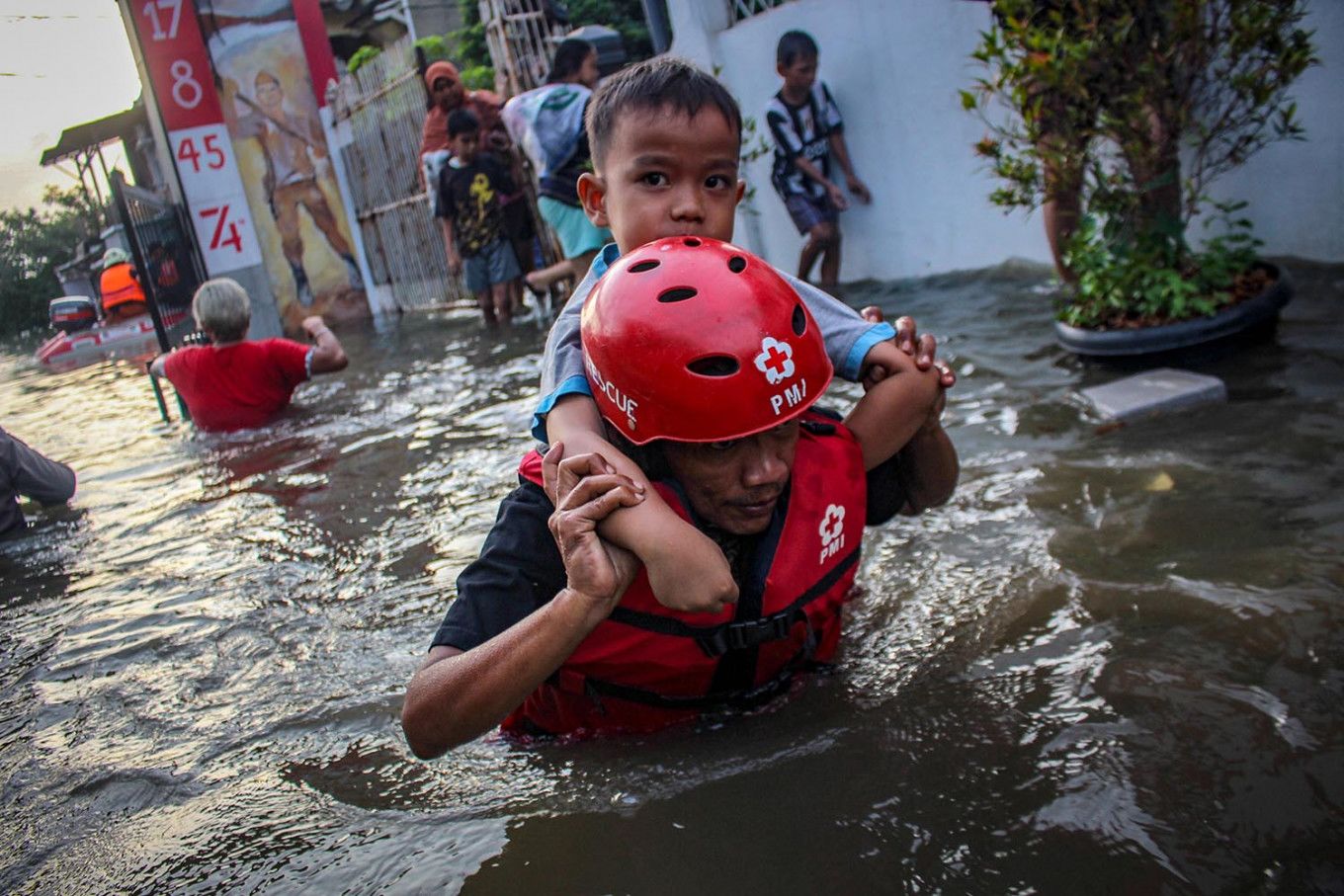
Red Cross rescuers in Indonesia. The IFRC faced a record number of climate-related disasters across the Asia Pacific region in 2020; a succession of storms and floods generated five IFRC press releases on Vietnam in October and November alone. (IFRC)
A month-long multimedia exhibition by PfR – Faces of Resilience – graphically illustrated both climate impacts in the developing world and the integrated strategy offered by Partners for Resilience, of which the Climate Centre is one.
Three new feature-length documentaries on PfR work in the Philippines, commissioned by the Netherlands Red Cross, were launched on YouTube.
An IFRC cartoonathon attracted 150 people from at least 60 countries to “explore transformation and change within our network”. The virtual event, hosted by the IFRC Solferino Academy, was designed and facilitated by the Climate Centre with support from EIT Climate-KIC – the EU’s leading agency for innovation on climate change.

Red Cross rescuers in Indonesia. The IFRC faced a record number of climate-related disasters across the Asia Pacific region in 2020; a succession of storms and floods generated five IFRC press releases on Vietnam in October and November alone. (IFRC)
Red Cross rescuers in Indonesia. The IFRC faced a record number of climate-related disasters across the Asia Pacific region in 2020; a succession of storms and floods generated five IFRC press releases on Vietnam in October and November alone. (IFRC)
Finance
The Climate Centre – an independent foundation under Dutch law – remains extremely grateful to its hosts, the Netherlands Red Cross in The Hague, which also assists with human resources and legal affairs.
We were supported last year by the European Commission, the ICRC and the IFRC secretariat, and these National Societies, in each case with the financial support of their respective governments’ foreign or development ministries (alphabetically), and other donors:
American Red Cross
Belgian Red Cross
British Red Cross
Danish Red Cross
Finnish Red Cross
French Red Cross
German Red Cross
Netherlands Red Cross
Norwegian Red Cross
We are also grateful to the American, Netherlands and New Zealand Red Cross for funding or sharing staff with us.
Other contributors were (alphabetically): Climate-KIC/EIT, Concern Worldwide, DAI Global, GFDRR, ICLEI, IKEA Foundation, Mercy Corps, the (UK) Met Office, NASA, the (French) National Research Institute for Sustainable Development, the (UK) Natural Environment Research Council, the (UK) Overseas Development Institute, Stichting Deltares (Netherlands), the World Bank, Volkswagen, and Zurich Re.
A full financial statement will be available in our hard-copy report later this year, along with an infographic summary to be added here.
As always, we thank all our donors for their generous support.
